The Seven Star Crags in Zhaoqing City, China are similar to Guilin's mountains in appearance. Located near Star Lake, they feature limestone crags formed in the shape of the Big Dipper constellation. The area is also home to numerous sculptures of Buddhist and Taoist idols and a bird reserve.
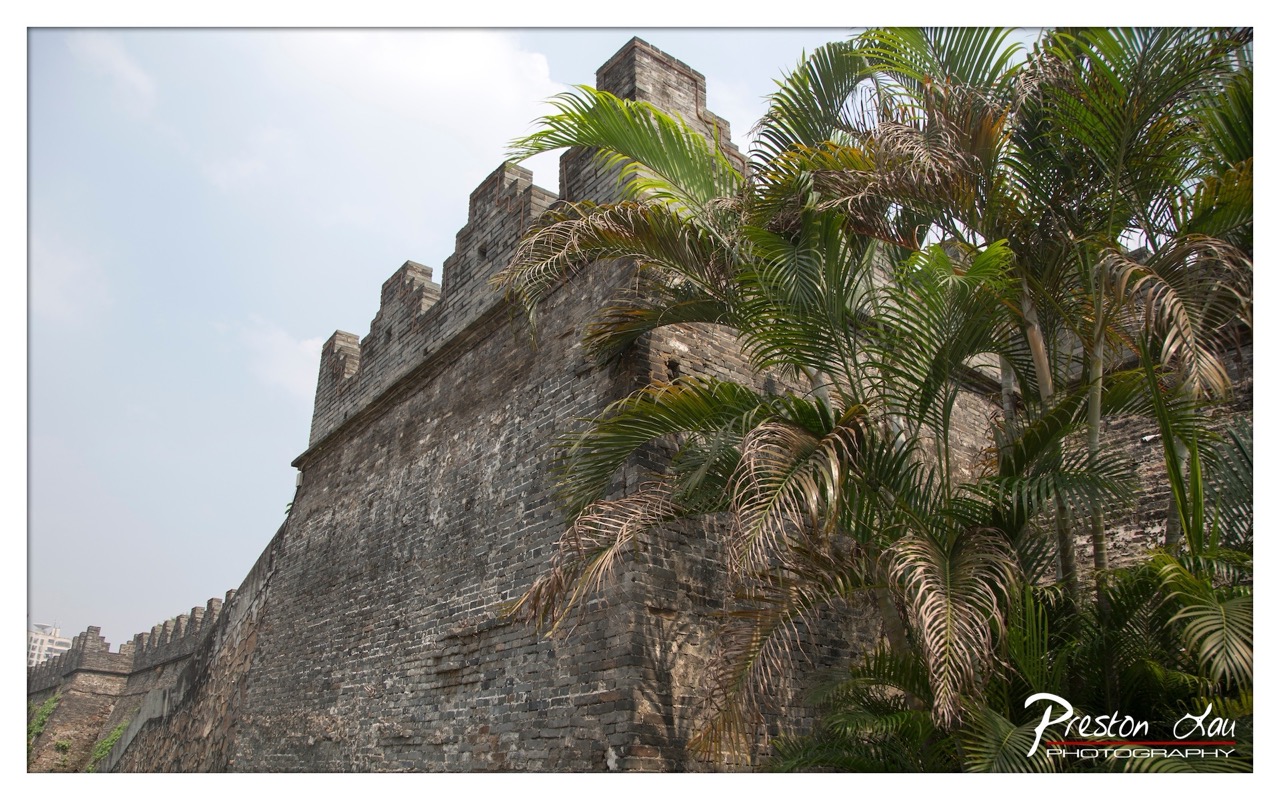

1. Overall Rating (0–10) — 7.0
This photograph captures a compelling contrast between ancient stone and vibrant nature, where the weathered fortress wall stands as a silent witness to time. The interplay of the palm fronds and the crenellated battlements creates a layered visual narrative, evoking both resilience and decay. While the image is rich in texture and historical resonance, the slightly muted sky and flat lighting hold it back from full artistic impact.
2. Composition (0–10) — 7.5
The low-angle perspective emphasizes the imposing scale of the wall, while the palm fronds in the foreground add depth and frame the structure effectively. The diagonal line of the wall draws the eye upward, creating a dynamic visual flow.
3. Lighting (0–10) — 6.0
The lighting is soft and diffused, likely due to overcast conditions, which flattens the textures of the brickwork. While it prevents harsh shadows, it also reduces the dramatic contrast that could enhance the scene’s mood.
4. Color & Tone (0–10) — 6.5
The palette is natural and restrained, with earthy grays and greens dominating. A slightly cooler tone lends a somber atmosphere, though a touch more vibrancy in the foliage could have made the contrast more striking.
5. Creativity (0–10) — 7.0
The juxtaposition of the ancient wall with the tropical foliage is inherently evocative, suggesting a fusion of history and nature. The photographer’s choice to include the palm fronds as a framing device adds a layer of intentional storytelling.
6. Technical Quality (0–10) — 8.0
The image is sharp and well-focused, with clear detail in both the brickwork and the palm leaves. The exposure is balanced, and the dynamic range is handled well despite the overcast conditions.
7. Emotional Impact (0–10) — 6.5
The photograph evokes a sense of quiet contemplation, inviting the viewer to reflect on the passage of time and the endurance of human constructs. The emotional resonance is subtle but present, grounded in the visual dialogue between permanence and growth.
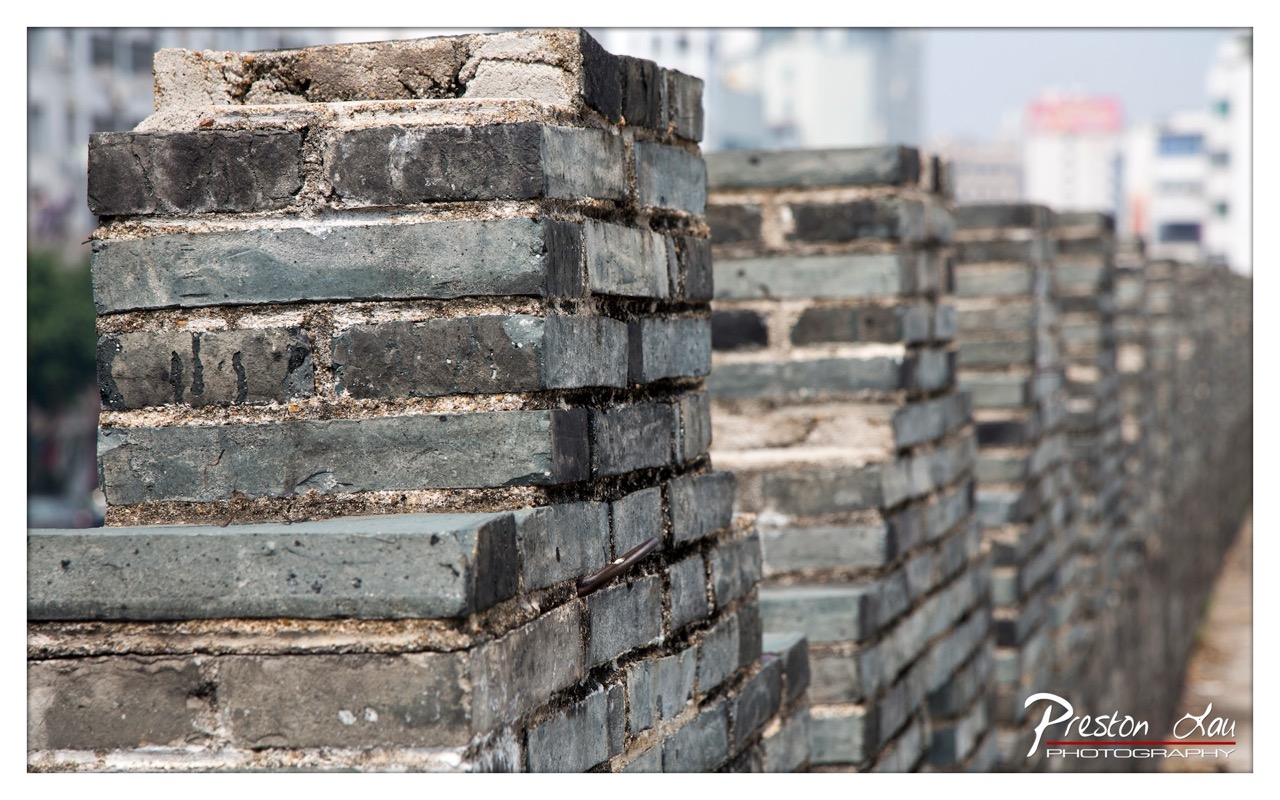

1. Overall Rating (0–10) — 7.0
This photograph captures the quiet endurance of an ancient brick wall, its weathered texture telling stories of time and resilience. The shallow depth of field draws focus to the foreground, emphasizing the tactile quality of the aged masonry, while the blurred modern buildings in the background create a compelling contrast between past and present. Though the image is strong in mood and composition, it slightly lacks dynamic lighting to fully elevate the scene’s emotional weight.
2. Composition (0–10) — 7.5
The diagonal line of the wall leads the eye into the frame, creating a sense of depth and continuity. The foreground brickwork dominates with intentional focus, while the blurred background provides context without distraction. The slight asymmetry enhances naturalism and guides the viewer’s gaze along the structure.
3. Lighting (0–10) — 6.0
The light is soft and diffused, likely from an overcast sky, which minimizes harsh shadows and evenly illuminates the texture of the bricks. While this preserves detail, it also reduces contrast and atmosphere, lending the image a somewhat flat and muted quality.
4. Color & Tone (0–10) — 6.5
The palette is restrained, dominated by cool grays and muted earth tones that reflect the aged material. The lack of vibrant color suits the historical subject, but the desaturated tones, while appropriate, limit visual excitement and emotional richness.
5. Creativity (0–10) — 7.0
The juxtaposition of ancient masonry with the modern city in the background offers a thoughtful commentary on urban evolution. The choice to emphasize texture and perspective over dramatic effects demonstrates a restrained, contemplative approach to storytelling.
6. Technical Quality (0–10) — 8.0
The focus is precise on the foreground brickwork, with sharp detail and clean edges. The depth of field is well controlled, and the image is free of technical flaws such as noise or blur, indicating strong execution.
7. Emotional Impact (0–10) — 6.5
The image evokes a sense of quiet reflection and historical continuity, inviting the viewer to consider the passage of time. While the emotional resonance is present, it remains subdued, held back by the lack of dramatic lighting and color intensity.
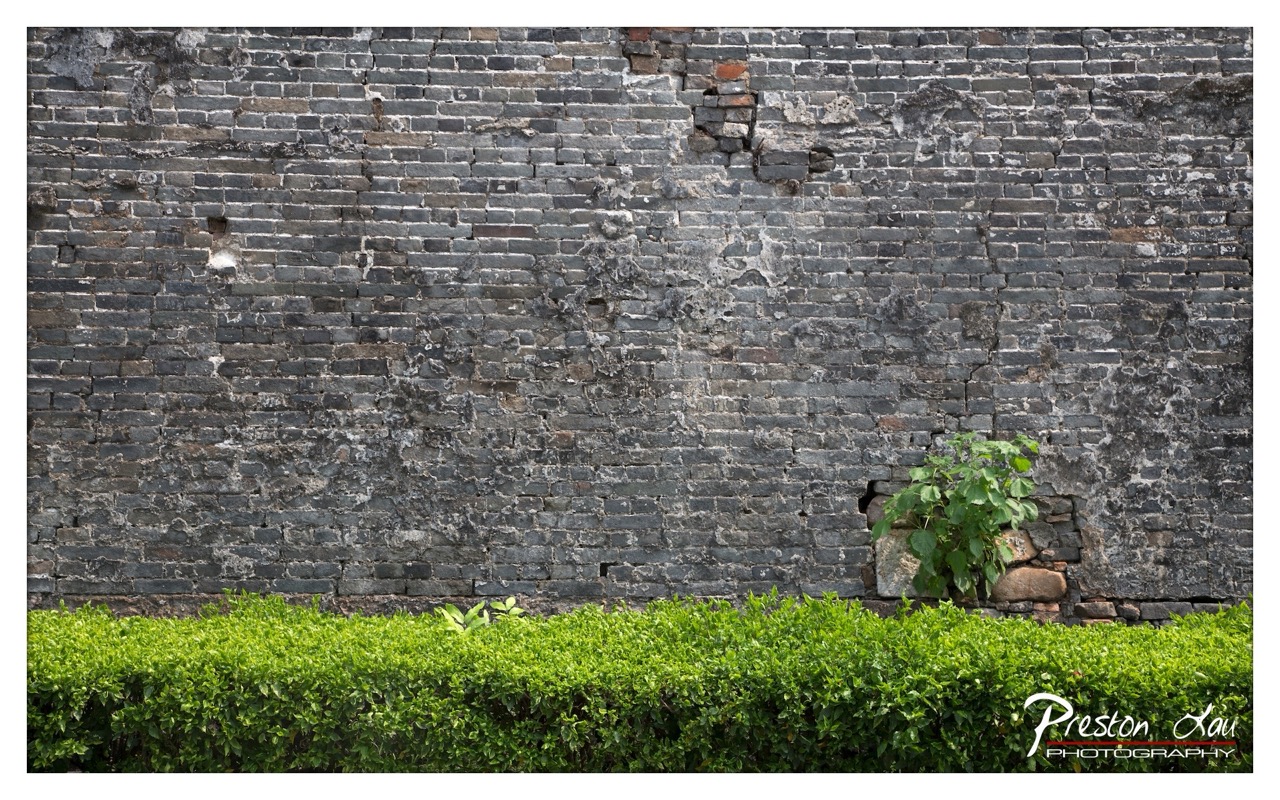

1. Overall Rating (0–10) — 7.0
This photograph captures the quiet tension between decay and resilience, where a weathered brick wall stands as a testament to time, while a vibrant green plant defiantly pushes through its cracks. The contrast between the dark, textured masonry and the lush foliage creates a compelling visual narrative of life reclaiming man-made structures. While the image is strong in mood and symbolism, the composition’s simplicity slightly limits its emotional depth, leaving the viewer with a moment of quiet contemplation rather than profound resonance.
2. Composition (0–10) — 7.0
The horizontal split between the wall and hedge creates a balanced, grounded frame, with the plant serving as a natural focal point. The slight asymmetry of the plant’s placement adds visual interest without disrupting harmony.
3. Lighting (0–10) — 7.0
Even, diffused lighting enhances the wall’s texture and the plant’s vivid green, avoiding harsh shadows and allowing subtle details in the brickwork to emerge. The soft light contributes to the contemplative tone.
4. Color & Tone (0–10) — 7.5
The muted, monochromatic tones of the gray bricks contrast beautifully with the saturated green of the foliage, creating a striking yet harmonious palette. The limited color range enhances the image’s focus on texture and form.
5. Creativity (0–10) — 7.5
The juxtaposition of decay and growth is a powerful metaphor, rendered with a quiet elegance. The photographer captures a universal theme—resilience—through a simple, yet deeply symbolic scene.
6. Technical Quality (0–10) — 8.0
The image is sharp and well-focused, with excellent detail in both the brick texture and the leaves. The clean white border and clear watermark add a professional finish.
7. Emotional Impact (0–10) — 6.5
The image evokes a sense of quiet hope and endurance, but its emotional pull is restrained by the lack of human presence or narrative context. It invites reflection rather than immediate emotional connection.
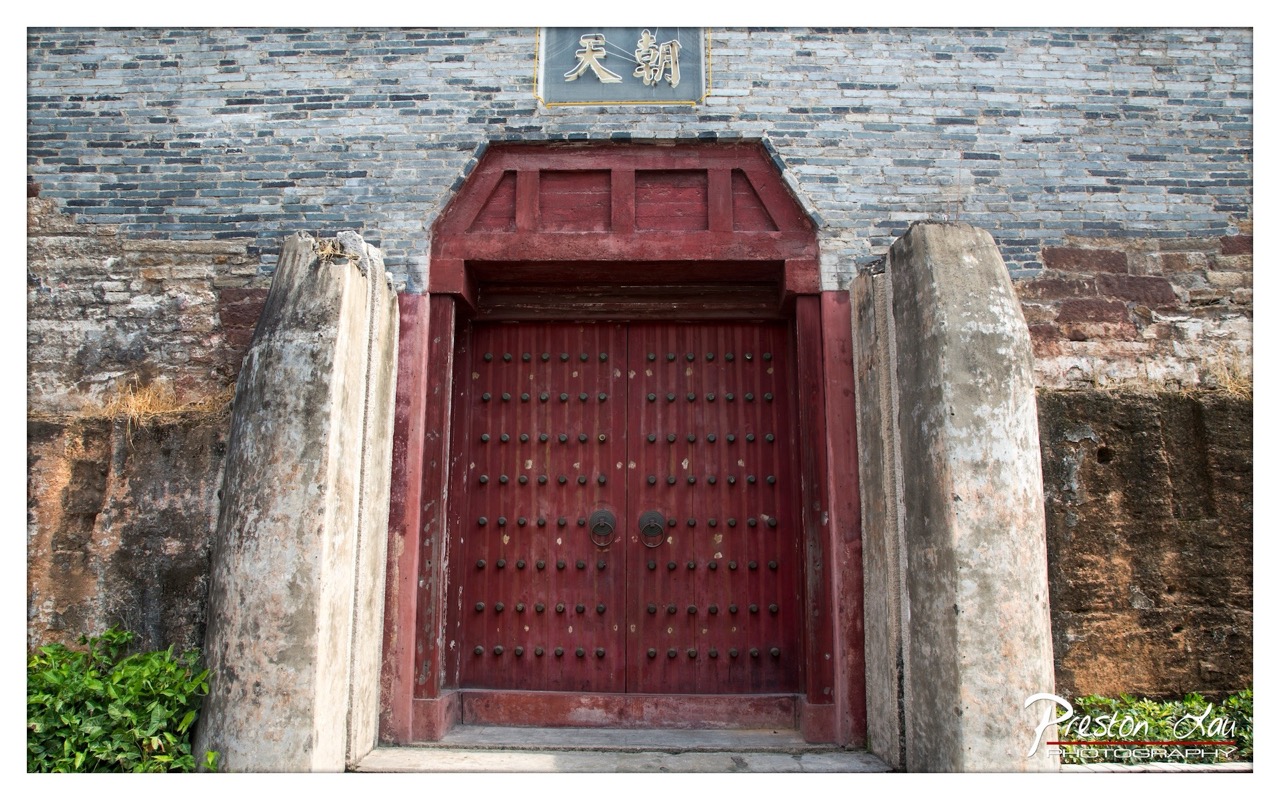

1. Overall Rating (0–10) — 7.5
This photograph captures the quiet dignity of an ancient gate, where time and tradition converge in a single frame. The bold red door, weathered but resolute, contrasts beautifully with the aged gray brickwork, while the inscription above adds a layer of cultural weight. The image balances historical authenticity with aesthetic appeal, though a more dynamic angle or tighter crop might have heightened its narrative power.
2. Composition (0–10) — 7.0
The centered framing emphasizes symmetry and formality, drawing the eye directly to the door. The flanking stone pillars create a natural frame, enhancing focus on the central subject, though the inclusion of excessive background and foreground elements slightly dilutes the visual tension.
3. Lighting (0–10) — 6.5
Natural daylight provides even illumination, revealing texture and detail without harsh shadows. The light is soft and diffused, allowing the red of the door to stand out against the muted wall, though a touch of directional light could have added depth and drama.
4. Color & Tone (0–10) — 7.0
The palette is restrained yet effective—deep reds and grays dominate, creating a harmonious, earthy tone. The subtle contrast between the vibrant door and the weathered stone enhances visual interest, with the green foliage adding a touch of organic life.
5. Creativity (0–10) — 7.0
The image captures a moment of stillness with a strong sense of place and history. While the subject is familiar, the photographer’s choice to emphasize texture and balance gives it a contemplative, almost cinematic quality.
6. Technical Quality (0–10) — 8.0
Sharp focus and clean detail are evident throughout, particularly in the door’s surface and the brickwork. The exposure is well-balanced, with no significant loss of detail in highlights or shadows.
7. Emotional Impact (0–10) — 7.5
The photograph evokes a sense of reverence and quiet contemplation, inviting the viewer to imagine the stories behind the door. There’s a subtle melancholy in its stillness, suggesting a place where time has paused, and history lingers in the air.
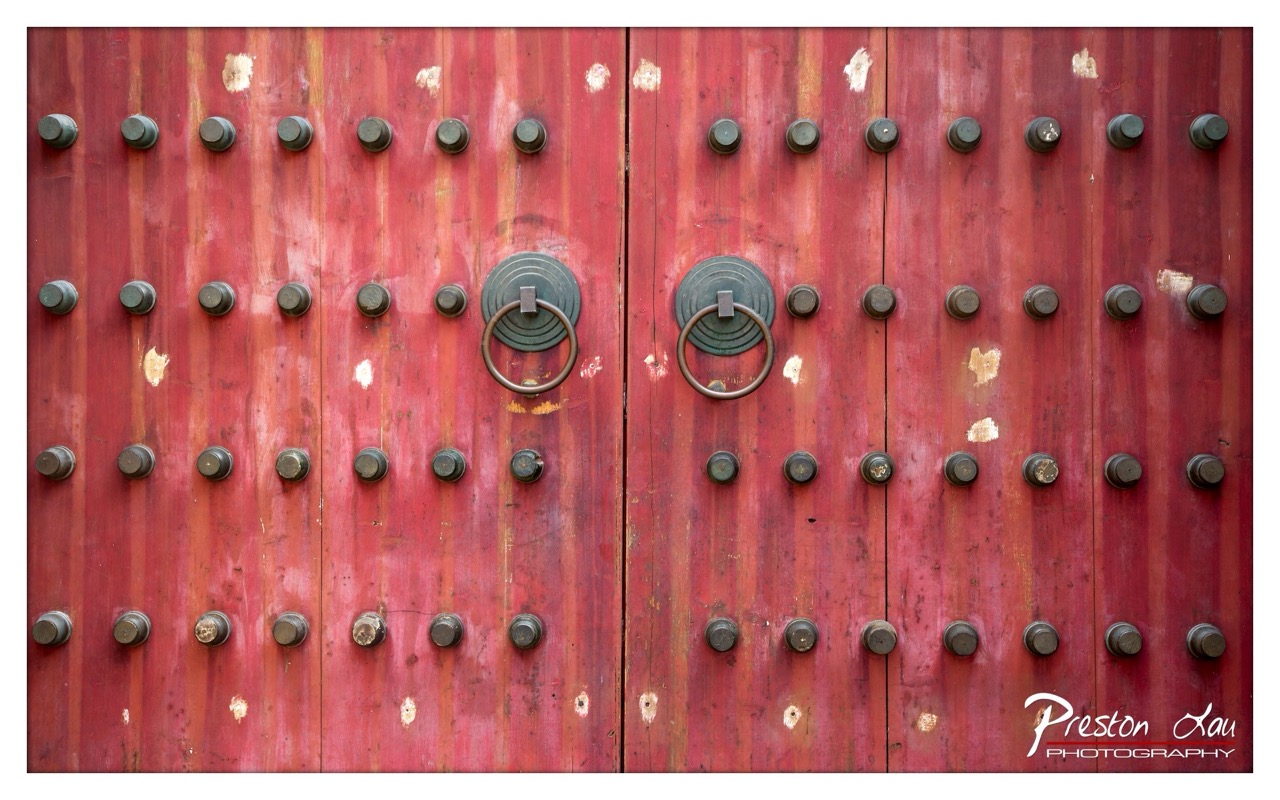

1. Overall Rating (0–10) — 7.5
This photograph captures the quiet dignity of a weathered red door, where time and tradition are etched into every crack and peeling paint. The bold symmetry and rich texture of the wood, punctuated by the metallic hardware, create a visually compelling narrative of endurance and cultural heritage. While the image is strong in composition and detail, its emotional depth is slightly restrained by the lack of atmospheric lighting, leaving the scene feeling more documentary than evocative.
2. Composition (0–10) — 8.0
The symmetrical framing of the double doors and evenly spaced studs creates a strong sense of balance and rhythm. The central placement of the door knockers draws the eye and anchors the composition, while the vertical grain of the wood adds visual flow and structure.
3. Lighting (0–10) — 6.5
The lighting is even and diffuse, likely from an overcast sky, which allows for clear detail across the surface but lacks the drama of directional light. While it highlights texture effectively, the flat quality diminishes the potential for mood and shadow contrast.
4. Color & Tone (0–10) — 8.0
The deep, saturated red of the doors is striking and evocative, with subtle variations in tone across the weathered surface adding richness. The dark metal accents provide a strong contrast, while the faded patches of white paint introduce a gentle tonal complexity that enhances the sense of age.
5. Creativity (0–10) — 7.0
The image is conceptually strong, using the door as a metaphor for cultural identity and history. The focus on pattern and texture transforms a mundane subject into a visually engaging study, though the approach is more traditional than experimental.
6. Technical Quality (0–10) — 8.5
The photograph is sharp and well-focused, with excellent detail in the wood grain and hardware. The exposure is balanced, and the resolution captures the subtle imperfections of the surface with clarity.
7. Emotional Impact (0–10) — 7.0
There’s a quiet reverence in the image, evoking a sense of history and quiet resilience. The worn surface invites curiosity about the stories behind the door, creating a subtle emotional connection through its visual storytelling.
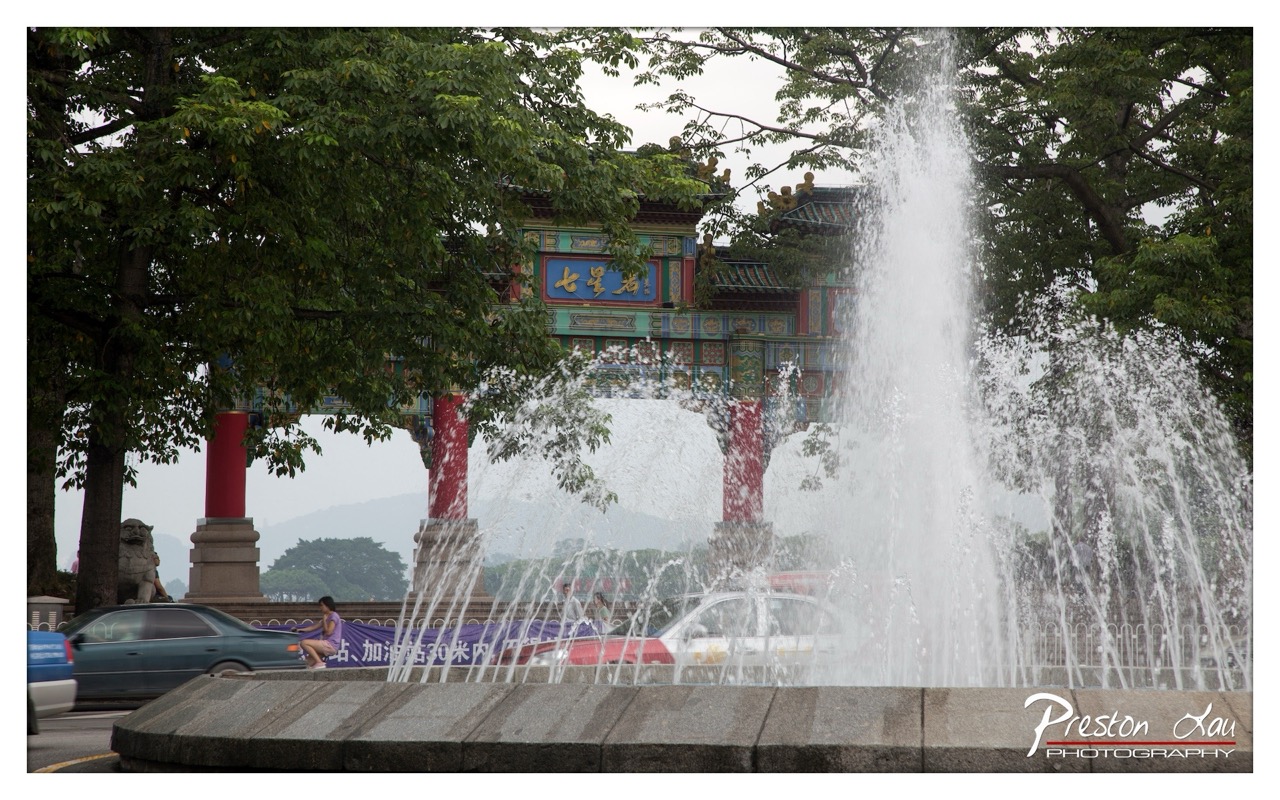

1. Overall Rating (0–10) — 6.0
This image captures a vibrant urban scene where traditional architecture meets modern life, with a fountain’s dynamic spray adding energy to the frame. The ornate archway, lush trees, and flowing water create a layered visual narrative, though the overcast sky and cluttered foreground slightly dampen the scene’s visual cohesion. While the composition conveys cultural richness and movement, it lacks a strong focal point, leaving the viewer’s eye scattered between the fountain, cars, and structure.
2. Composition (0–10) — 5.5
The fountain dominates the right side, creating imbalance, while the archway is partially obscured by foliage and vehicles. A tighter crop would better unify the architectural and natural elements.
3. Lighting (0–10) — 5.0
Diffused daylight from the overcast sky softens shadows and flattens contrast, muting the vivid colors of the arch and reducing the visual impact of the water’s motion.
4. Color & Tone (0–10) — 6.0
The image features a strong contrast between the green foliage, red pillars, and blue signage, though the overall tone is slightly desaturated. The cool color cast from the sky tempers the vibrancy of the traditional colors.
5. Creativity (0–10) — 6.5
The juxtaposition of the ornate gate, the modern cars, and the lively fountain creates a compelling cultural narrative. The photographer captures a moment of everyday life with a sense of place, though the execution feels more documentary than artistic.
6. Technical Quality (0–10) — 7.0
The image is sharp and well-focused, with clean detail in the water spray and architectural elements. However, the depth of field is inconsistent, with some background elements slightly soft.
7. Emotional Impact (0–10) — 5.5
The scene evokes a sense of daily rhythm and cultural continuity, but the emotional resonance is muted by the lack of a clear focal point and the neutral lighting, which keeps the viewer at a distance.
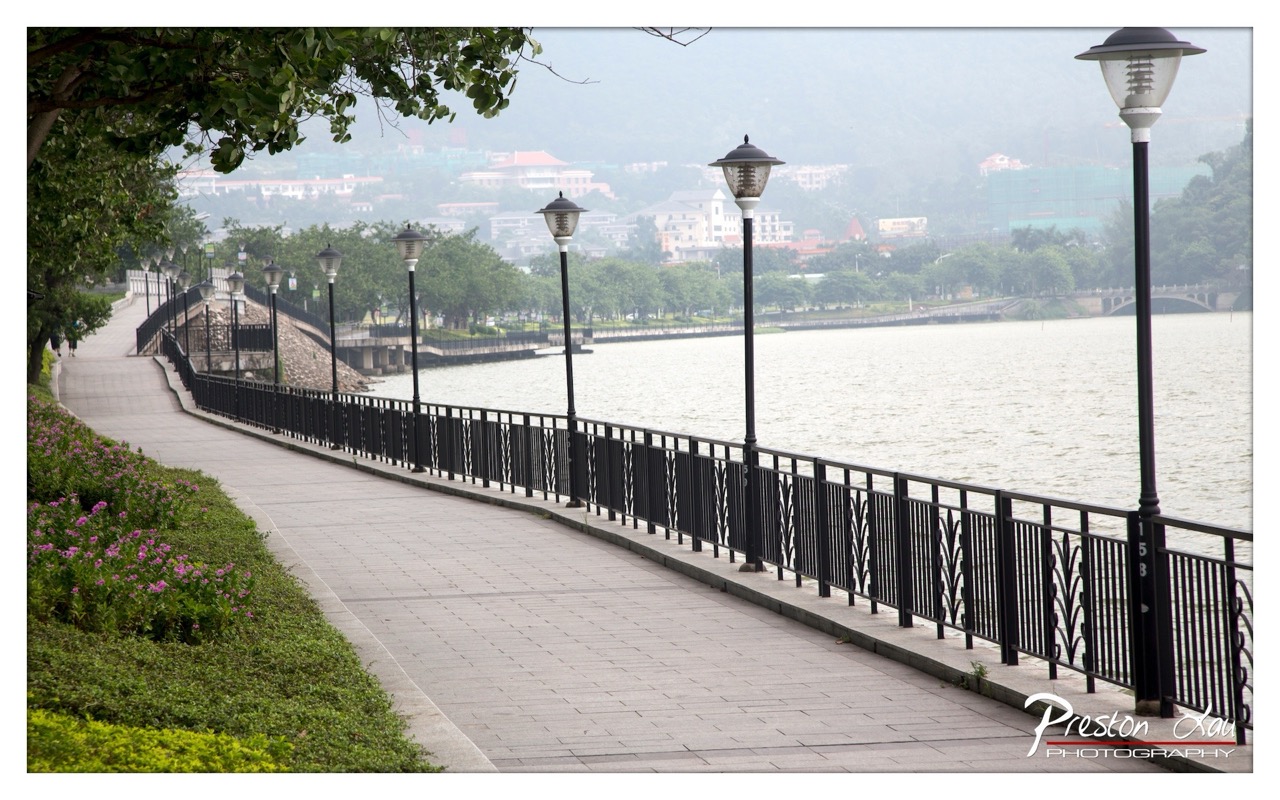

1. Overall Rating (0–10) — 7.0
This photograph captures a serene riverside promenade, where the gentle curve of the path invites quiet contemplation. The soft, diffused light and muted tones evoke a calm, almost melancholic atmosphere, enhanced by the hazy backdrop of distant buildings. While the composition is balanced and the scene is tranquil, the lack of a strong focal point or human presence slightly limits its emotional pull.
2. Composition (0–10) — 7.5
The curving pathway creates a strong leading line, drawing the eye toward the distant bridge and cityscape. The framing, with foliage in the foreground and a rhythmic repetition of lampposts, adds depth and visual interest. The balance between the foreground and background is well-executed, though the image feels slightly static due to the uniformity of the elements.
3. Lighting (0–10) — 6.5
The diffused, overcast lighting contributes to a soft, even tone across the scene, minimizing harsh shadows and allowing for a peaceful mood. However, the lack of directional light or contrast reduces the sense of dimension and drama, giving the image a somewhat flat appearance.
4. Color & Tone (0–10) — 6.0
The palette is dominated by muted greens, grays, and blacks, creating a cohesive but subdued atmosphere. While the colors are harmonious, they lack vibrancy, particularly in the sky and water, which blend into a uniform, washed-out tone. A touch of warmth or contrast could have enlivened the scene.
5. Creativity (0–10) — 6.5
The image presents a familiar urban landscape with a contemplative tone, relying on composition and mood rather than bold artistic choices. The repetition of lampposts and the gentle curve of the walkway lend a rhythmic quality, suggesting a quiet narrative of daily life. While not groundbreaking, it successfully conveys a sense of stillness and introspection.
6. Technical Quality (0–10) — 8.0
The image is sharp and clear, with well-defined details in the pavement, railings, and foliage. The exposure is balanced, and there are no noticeable flaws in focus or noise. The watermark is subtle and does not distract from the composition.
7. Emotional Impact (0–10) — 6.5
The photograph evokes a sense of quiet solitude and peaceful reflection, inviting the viewer to imagine strolling along the path on a calm, overcast day. The subdued atmosphere and lack of human activity contribute to a contemplative mood, though the emotional resonance remains gentle rather than profound.
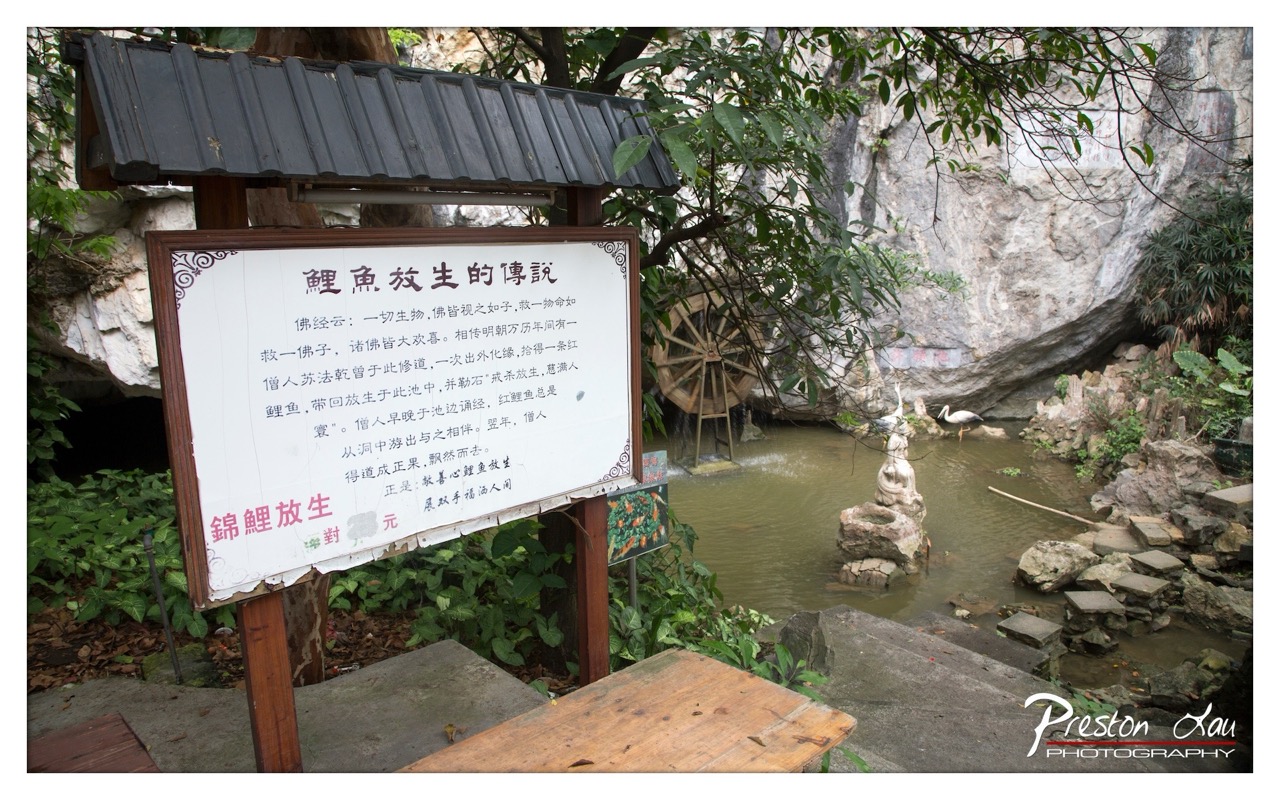

1. Overall Rating (0–10) — 7.0
This photograph captures a serene, contemplative corner of a Buddhist temple garden, where nature and tradition intertwine. The presence of the sign, waterwheel, and stone statue creates a layered narrative of spiritual practice and environmental harmony. While the composition is rich in cultural detail, the slightly cluttered foreground and uneven lighting detract from the image’s overall elegance, keeping it from achieving a more refined aesthetic.
2. Composition (0–10) — 6.5
The sign in the foreground anchors the image but partially obstructs the view, creating a busy left side. The waterwheel and pond provide a balanced counterpoint on the right, though the diagonal line of the wooden table disrupts visual flow.
3. Lighting (0–10) — 6.0
Natural daylight illuminates the scene evenly, but the overcast quality and shadowed areas reduce depth and drama. The light is functional but lacks the warmth or contrast needed to elevate the mood.
4. Color & Tone (0–10) — 6.5
The palette is dominated by earthy greens and grays, which support the natural, tranquil setting. However, the colors appear slightly muted, and the lack of vibrancy diminishes the visual impact of the water and foliage.
5. Creativity (0–10) — 7.0
The image successfully conveys a story rooted in Buddhist tradition and environmental care, using the sign and setting to suggest a deeper cultural narrative. The inclusion of the waterwheel and stone sculpture adds symbolic weight, enhancing the image’s conceptual depth.
6. Technical Quality (0–10) — 7.5
Sharp focus is maintained throughout, with clear text and detailed textures in the rocks and foliage. The exposure is well-balanced, and the image is free from noticeable flaws.
7. Emotional Impact (0–10) — 6.5
The photograph evokes a sense of quiet reverence and reflection, inviting the viewer to contemplate the harmony between humanity and nature. While the emotional resonance is present, it remains subdued due to the image’s documentary tone.
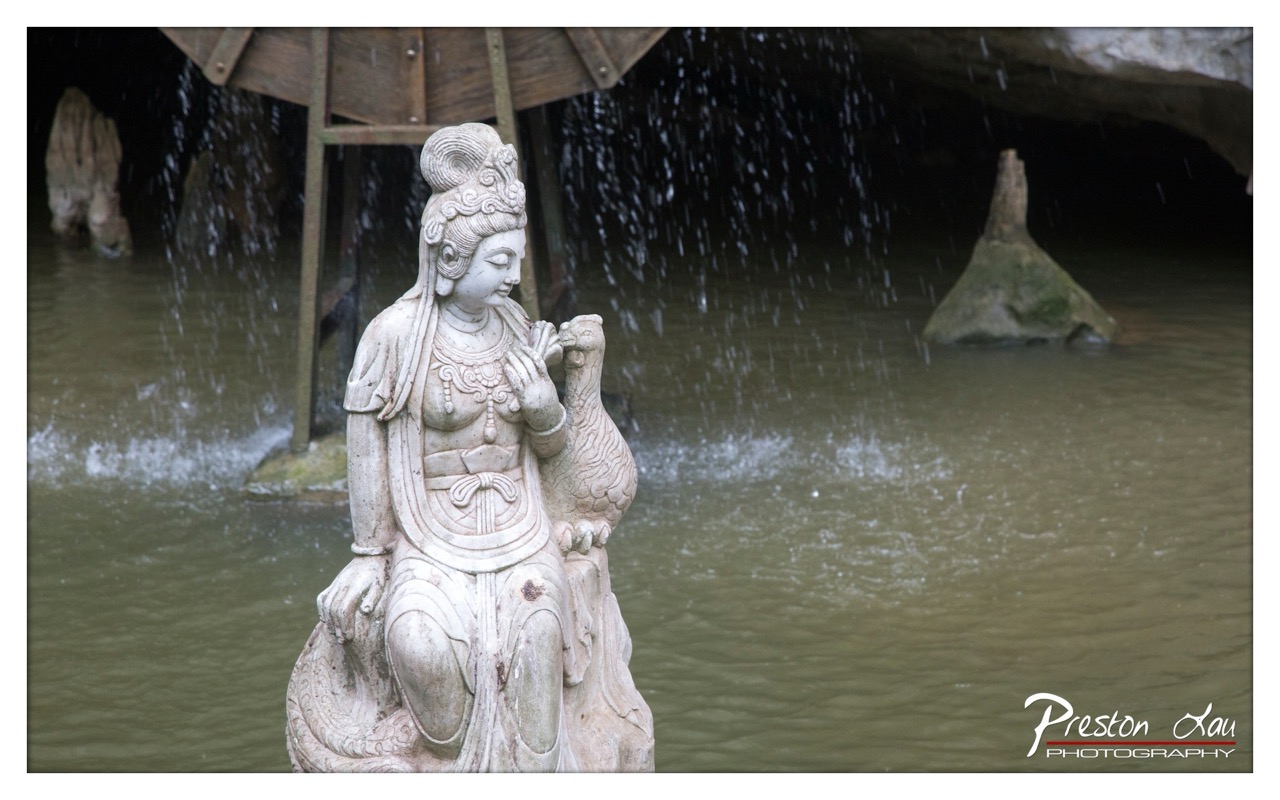

1. Overall Rating (0–10) — 7.0
This photograph captures a serene and contemplative moment, with a stone statue of a deity seated in a tranquil water setting, evoking a sense of spiritual calm. The interplay of falling water and the statue’s meditative pose creates a quiet narrative of reverence and stillness. While the image is strong in atmosphere, the slightly muted color and uneven lighting prevent it from achieving full visual richness.
2. Composition (0–10) — 7.5
The statue is well-placed off-center, drawing the eye while allowing the cascading water and cave-like background to add depth. The vertical lines of the water and structure guide the viewer’s gaze naturally, though the background elements are slightly distracting.
3. Lighting (0–10) — 6.0
The lighting is diffused and even, likely due to the cave’s sheltered environment, which softens shadows but also diminishes contrast. The overcast quality lends a somber mood, but the lack of directional light flattens the texture of the stone.
4. Color & Tone (0–10) — 6.5
The palette is subdued, dominated by muted grays and olive greens, which enhances the meditative tone. While harmonious, the lack of vibrancy makes the image feel slightly washed out, limiting its visual impact.
5. Creativity (0–10) — 7.0
The concept of combining a religious statue with a natural water feature is compelling and thoughtfully framed. The inclusion of falling water as both visual and auditory metaphor adds layers to the narrative, suggesting purification or prayer.
6. Technical Quality (0–10) — 7.5
The image is sharp and detailed, especially in the statue’s intricate carvings. Focus is well-managed, and the depth of field effectively isolates the subject. The watermark is professionally placed and unobtrusive.
7. Emotional Impact (0–10) — 7.5
There’s a palpable sense of peace and reverence that resonates with the viewer. The quiet stillness of the statue, combined with the gentle motion of water, evokes introspection and spiritual connection.
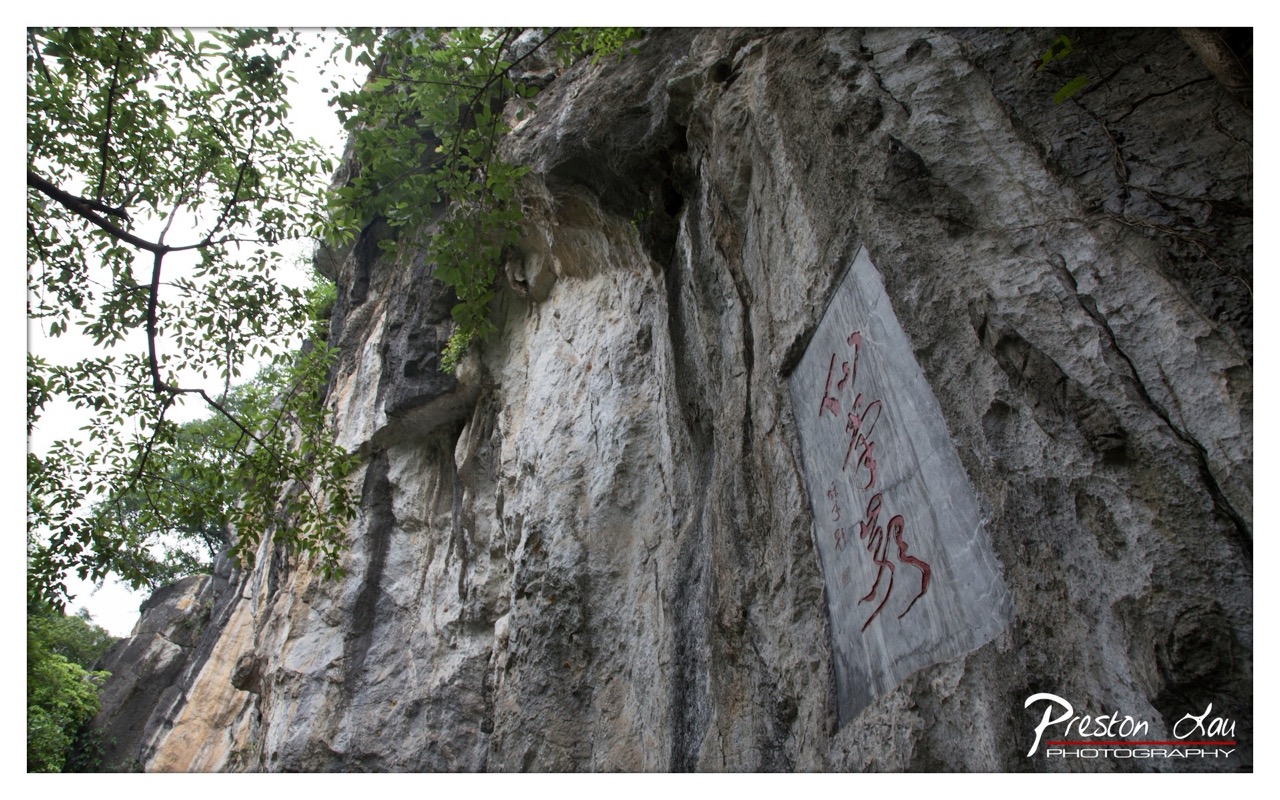

1. Overall Rating (0–10) — 7.0
This photograph captures the quiet grandeur of a carved stone inscription set into a rugged limestone cliff, evoking a sense of timelessness and cultural depth. The interplay of natural texture and human artistry creates a compelling visual narrative, though the overcast lighting slightly dampens the scene’s emotional resonance. With stronger contrast and a more dynamic angle, the image could better convey the monumentality of the site.
2. Composition (0–10) — 6.5
The low-angle perspective emphasizes the cliff’s verticality, while the placement of the inscription draws the eye. However, the overhanging foliage on the left disrupts balance, creating a visual distraction that pulls focus from the central subject.
3. Lighting (0–10) — 5.5
Diffuse, overcast light softens shadows and flattens the scene, reducing the dramatic texture of the rock. While it ensures even exposure, the lack of directional light diminishes depth and mood.
4. Color & Tone (0–10) — 6.0
The palette is dominated by muted grays and greens, with the red calligraphy offering a subtle but effective focal point. A touch more saturation would enhance the visual contrast and bring the inscription to life.
5. Creativity (0–10) — 7.0
The fusion of natural landscape and human inscription presents a compelling cultural story. The choice to highlight the calligraphy against the weathered stone suggests a reverence for tradition, lending the image a thoughtful and contemplative quality.
6. Technical Quality (0–10) — 7.5
Sharp focus and clean detail across the frame reflect strong technical execution. The watermark is discreet, and image clarity is high, allowing the textures of the rock and foliage to be clearly discerned.
7. Emotional Impact (0–10) — 6.5
The image evokes a sense of reverence and quiet contemplation, inviting the viewer to reflect on the passage of time and the endurance of cultural expression. While the subdued lighting tempers the emotional punch, the subject matter still carries weight and resonance.
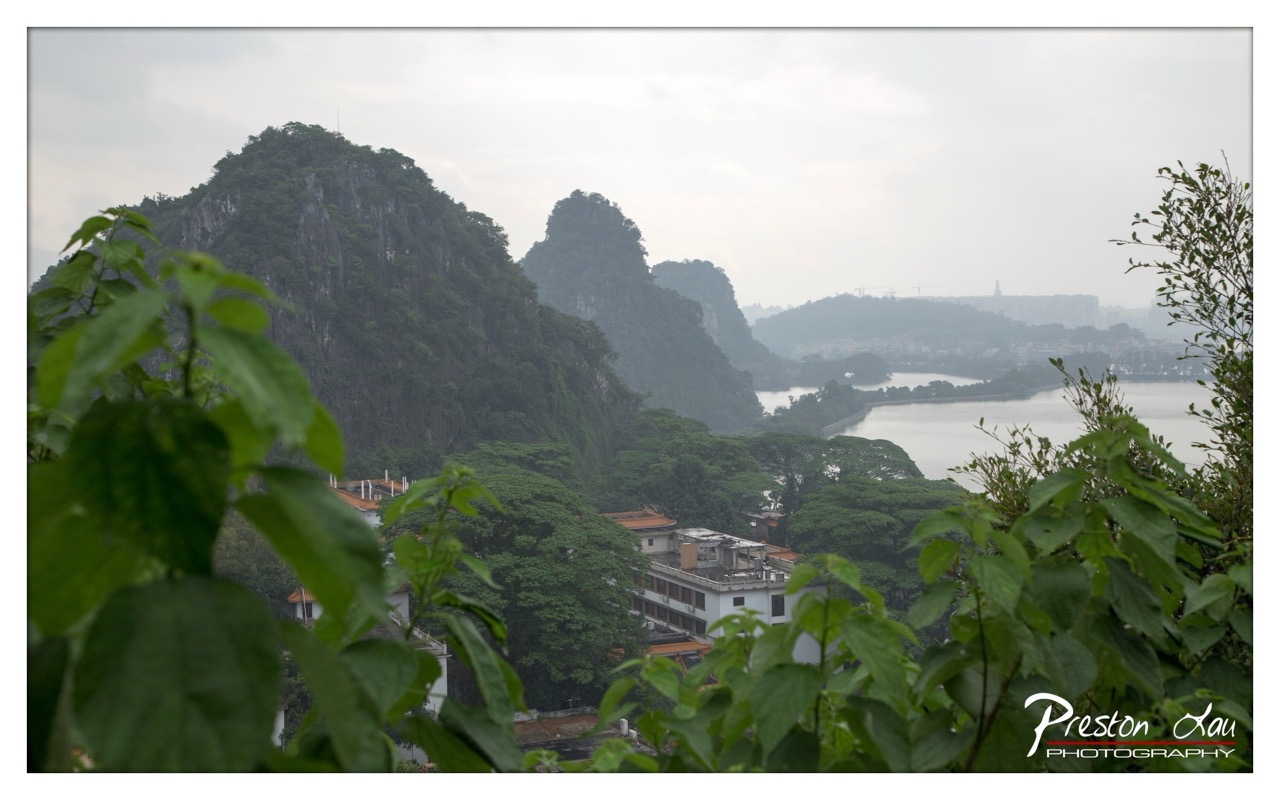

1. Overall Rating (0–10) — 7.0
This photograph captures a serene and atmospheric view of a misty karst landscape, where nature and urban development coexist in quiet tension. The layered composition, with lush greenery in the foreground and distant hills shrouded in haze, evokes a sense of depth and contemplative stillness. While the muted light and overcast conditions temper the image’s vibrancy, they enhance its moody, introspective quality, creating a portrait of place that feels both familiar and elusive.
2. Composition (0–10) — 7.5
The framing is thoughtfully composed, using foreground foliage to create a natural vignette that draws the eye into the scene. The placement of the karst formations and the winding waterway leads the viewer’s gaze through the image, balancing the organic shapes of the landscape with the subtle presence of human structures.
3. Lighting (0–10) — 6.0
The diffuse, overcast light softens the scene, reducing harsh shadows and contributing to a hazy, atmospheric mood. While this enhances the sense of calm, it also flattens contrast and minimizes texture, slightly muting the visual drama of the karst peaks.
4. Color & Tone (0–10) — 6.5
The palette is dominated by muted greens and grays, reflecting the damp, cloudy conditions. The lack of saturated color lends a subdued, almost monochromatic feel, which suits the contemplative tone but limits the image’s visual impact.
5. Creativity (0–10) — 7.0
The photographer successfully uses natural framing and atmospheric conditions to create a mood-driven image. The juxtaposition of traditional architecture against the dramatic karst landscape suggests a narrative of coexistence between nature and civilization, lending the photograph a thoughtful, layered quality.
6. Technical Quality (0–10) — 8.0
The image is sharp and well-focused, with clean detail visible in the foliage and distant buildings. The exposure is balanced, avoiding blown highlights or crushed shadows, and the watermark is unobtrusive.
7. Emotional Impact (0–10) — 7.0
The photograph evokes a sense of quiet introspection and melancholy beauty, inviting the viewer to pause and reflect on the harmony and tension between natural grandeur and human presence. The hazy atmosphere deepens the emotional resonance, making the scene feel both distant and intimate.
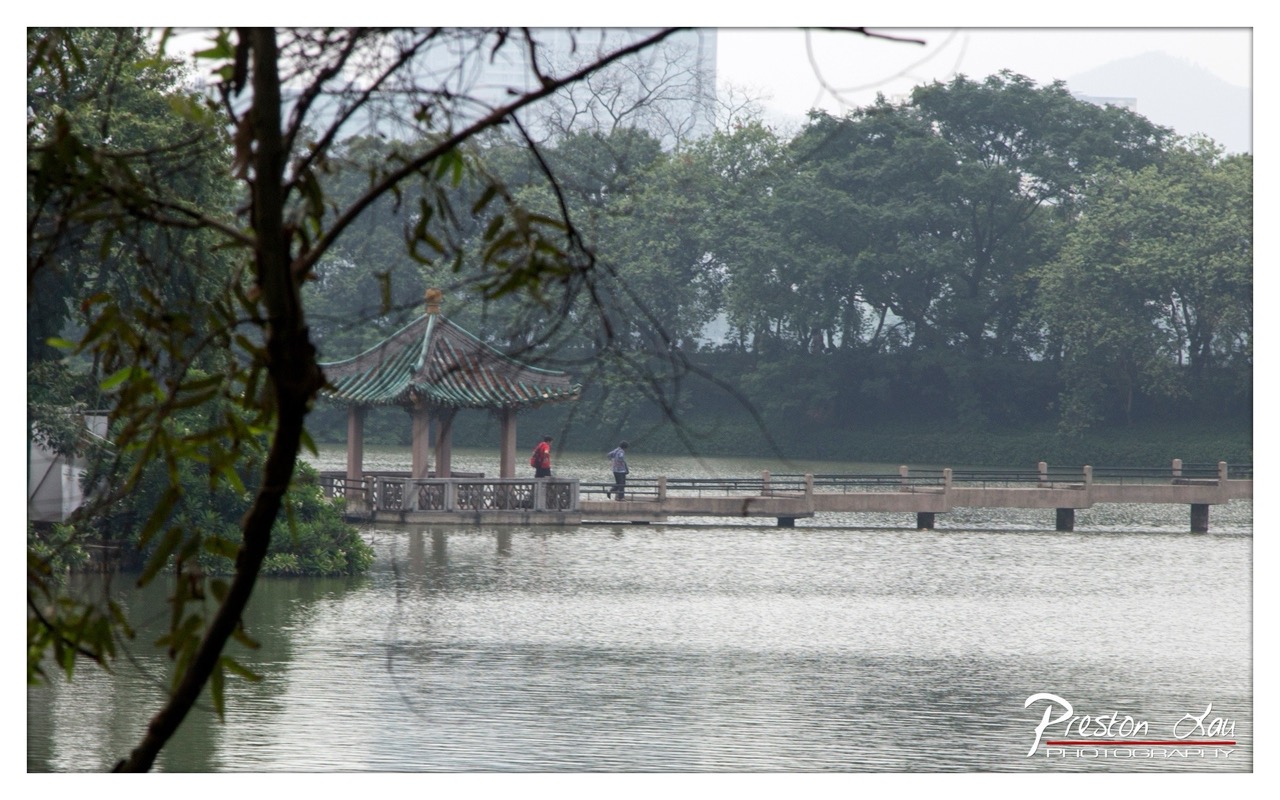

1. Overall Rating (0–10) — 6.0
This photograph captures a tranquil moment in a traditional Chinese garden, where nature and architecture coexist under a hazy sky. The framing through foreground branches adds depth and intimacy, while the muted tones and soft light evoke a contemplative mood. However, the overall image feels slightly underexposed and lacks visual punch, limiting its emotional resonance despite its serene subject matter.
2. Composition (0–10) — 6.5
The use of foreground foliage creates a natural frame, guiding the eye toward the pavilion and bridge. The placement of the figures adds scale and life, though the composition feels slightly unbalanced due to the heavy left-side framing.
3. Lighting (0–10) — 5.5
Diffused, overcast lighting softens the scene, minimizing harsh shadows and creating a calm, subdued atmosphere. However, the lack of contrast and brightness dulls the image's visual appeal.
4. Color & Tone (0–10) — 5.0
The palette is dominated by muted greens and grays, which enhance the tranquil mood but reduce vibrancy. The lack of tonal range gives the image a flat appearance.
5. Creativity (0–10) — 6.0
The framing through the tree branches introduces a thoughtful, observational perspective, and the fusion of traditional architecture with a modern city skyline in the background adds subtle narrative depth.
6. Technical Quality (0–10) — 6.5
The image is sharp in focus, with clean detail in the water and structures. However, the low contrast and slightly dull color rendering suggest room for improvement in post-processing.
7. Emotional Impact (0–10) — 5.5
The photograph conveys a quiet, meditative stillness, but the muted tones and lack of dynamic light prevent a stronger emotional connection, leaving the viewer observing rather than feeling.
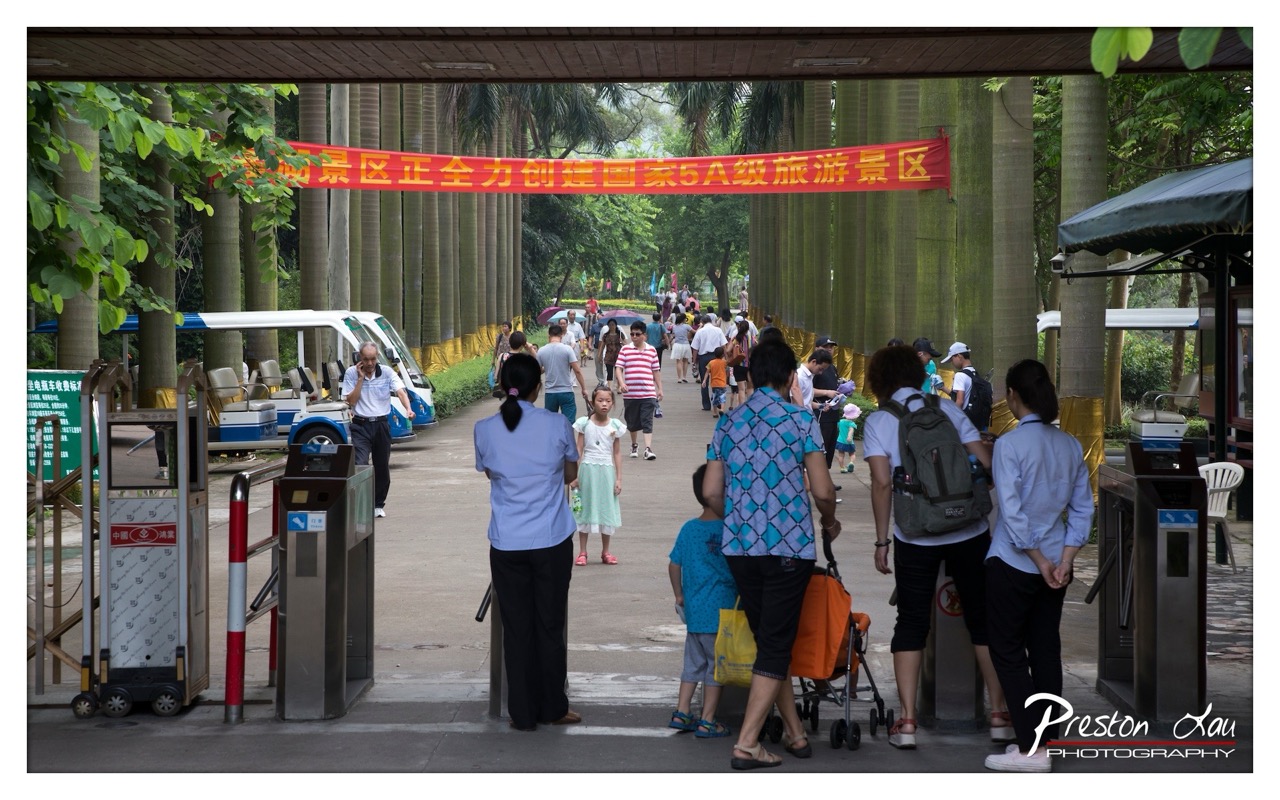

1. Overall Rating (0–10) — 6.8
This photograph captures the bustling energy of a tourist entrance, where movement and purpose converge beneath a canopy of tall palm trees. The red banner, though visually loud, adds narrative context, grounding the scene in a moment of civic pride and development. While the image feels candid and authentic, its visual weight is slightly diminished by the cluttered foreground and uneven composition, which distract from the central flow of people.
2. Composition (0–10) — 6.0
The wide-angle perspective creates a sense of depth, guiding the eye down the tree-lined path, but the placement of the turnstiles and signage on the left disrupts visual harmony. The central axis is weakened by the asymmetrical framing of the crowd, creating a slightly chaotic balance.
3. Lighting (0–10) — 6.5
Natural daylight provides even illumination, with soft shadows indicating an overcast or late afternoon sky. The light enhances the greenery and the vibrant red of the banner, though it lacks dramatic contrast or directional flair to elevate the scene.
4. Color & Tone (0–10) — 6.0
The palette is dominated by green foliage and the bold red of the banner, creating a strong visual contrast. However, the tones are somewhat muted overall, with the blue uniforms and white tour vehicles blending into the background, reducing visual impact.
5. Creativity (0–10) — 6.5
The image functions as a strong documentary piece, capturing a moment in time with authenticity. The inclusion of the banner adds a layer of social commentary, suggesting aspiration and progress. While not artistically adventurous, it tells a clear story of tourism and urban development.
6. Technical Quality (0–10) — 7.5
Sharp focus across the frame allows for clear detail in both the foreground and background. The exposure is well-balanced, with no significant overexposed or underexposed areas, and the image is free from distracting artifacts.
7. Emotional Impact (0–10) — 6.0
The photograph evokes a sense of everyday life and collective movement, inviting viewers to imagine the journey ahead. While it captures a moment of activity, the lack of a focal emotional point—such as a smile or a shared gesture—keeps the emotional connection somewhat distant.
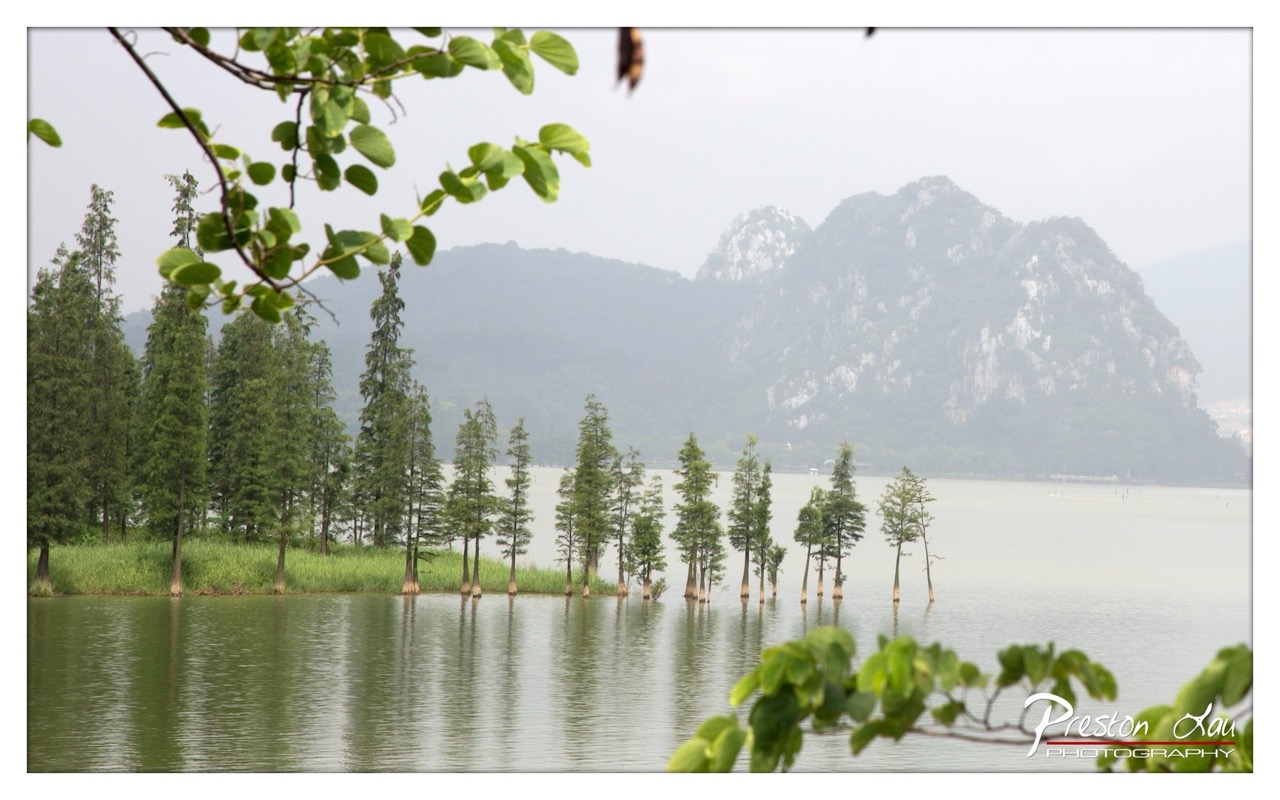

1. Overall Rating (0–10) — 7.0
This photograph captures a serene and contemplative landscape, where misty mountains and waterlogged trees evoke a sense of quiet stillness. The framing through foreground foliage adds depth and intimacy, grounding the scene in natural detail. While the muted palette and soft focus lend a dreamlike quality, the image could benefit from stronger contrast and a more deliberate focal point to elevate its emotional resonance.
2. Composition (0–10) — 7.5
The layered composition—foreground leaves, midground trees, and background mountains—creates a sense of depth and perspective. The diagonal line of the trees draws the eye into the frame, while the framing branches add a natural vignette effect. The placement of the subject feels balanced, though the left side slightly dominates.
3. Lighting (0–10) — 6.0
Diffuse, overcast light softens the scene, creating a uniform and hazy atmosphere that suits the misty environment. While this contributes to the mood, it also flattens the image by minimizing shadows and depth, reducing the visual impact of the mountain textures.
4. Color & Tone (0–10) — 6.5
The palette is dominated by soft greens and grays, creating a harmonious but subdued tone. The lack of vibrant color reflects the natural mood of the scene, but a touch more saturation could enhance the visual richness without compromising authenticity.
5. Creativity (0–10) — 7.0
The use of natural framing and layered perspective demonstrates thoughtful composition. The choice to capture the scene in foggy conditions adds a poetic quality, suggesting a moment suspended in time. The image feels less like a snapshot and more like an intentional meditation on nature.
6. Technical Quality (0–10) — 7.5
The image is sharp where it counts, with clear detail in the foreground leaves and midground trees. The focus is well-managed, and the exposure is balanced despite the overcast conditions. The watermark is unobtrusive and professionally placed.
7. Emotional Impact (0–10) — 7.0
The photograph evokes calmness and introspection, inviting the viewer to pause and reflect. The quiet beauty of the water, trees, and distant mountains creates a meditative mood, though the lack of dynamic contrast or focal intensity keeps the emotional pull from fully resonating.
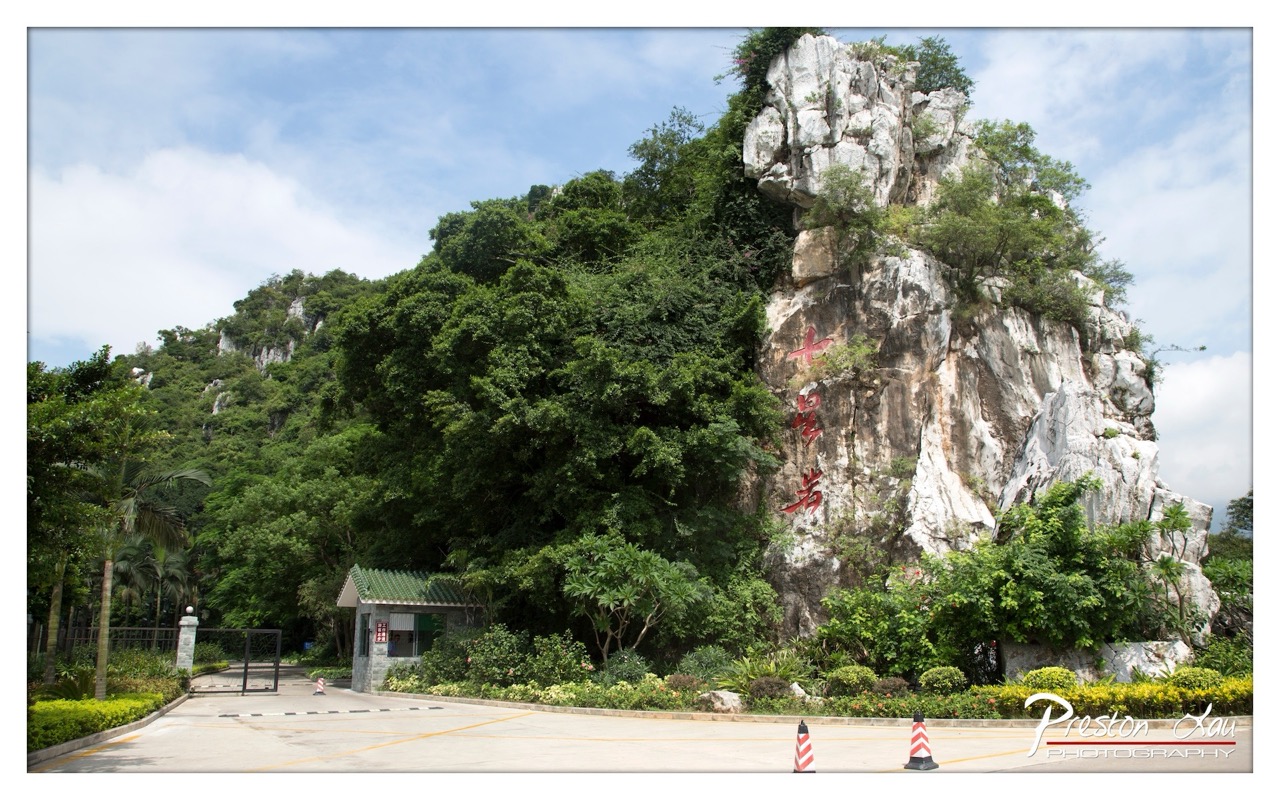

1. Overall Rating (0–10) — 7.0
This photograph captures the serene grandeur of a karst landscape, where nature and human inscription coexist in quiet harmony. The bold red calligraphy on the cliff face adds a cultural anchor, grounding the scene in a sense of place and tradition. While the composition is strong and the natural beauty is well-rendered, the presence of modern elements like the gate and traffic cones slightly disrupts the timeless quality of the setting.
2. Composition (0–10) — 7.5
The framing balances the imposing rock formation with the surrounding greenery and foreground elements, creating a sense of depth and scale. The placement of the gate and road guides the eye naturally into the scene, though the symmetry is slightly off-center, lending a more organic feel.
3. Lighting (0–10) — 7.0
Natural daylight illuminates the scene evenly, with soft shadows that accentuate the texture of the limestone. The sky’s scattered clouds add dimension, and the overall exposure maintains detail in both highlights and midtones.
4. Color & Tone (0–10) — 7.5
The lush greens of the foliage contrast beautifully with the pale gray of the rock and the vibrant red of the calligraphy. The color palette feels authentic and vivid, with a slight coolness in the sky that enhances the natural atmosphere.
5. Creativity (0–10) — 6.5
The image is grounded in realism, capturing a recognizable landmark with respect to its cultural and natural context. The integration of calligraphy into the landscape adds a narrative layer, but the approach remains conventional rather than avant-garde.
6. Technical Quality (0–10) — 8.0
Sharp focus across the frame ensures clarity in both the foreground and background. The image is well-exposed, with clean details and no visible noise, demonstrating strong technical execution.
7. Emotional Impact (0–10) — 6.5
The scene evokes a sense of calm and reverence, inviting contemplation of nature’s endurance and human heritage. While the emotional resonance is subtle, it is genuine, particularly for those familiar with the cultural significance of the site.
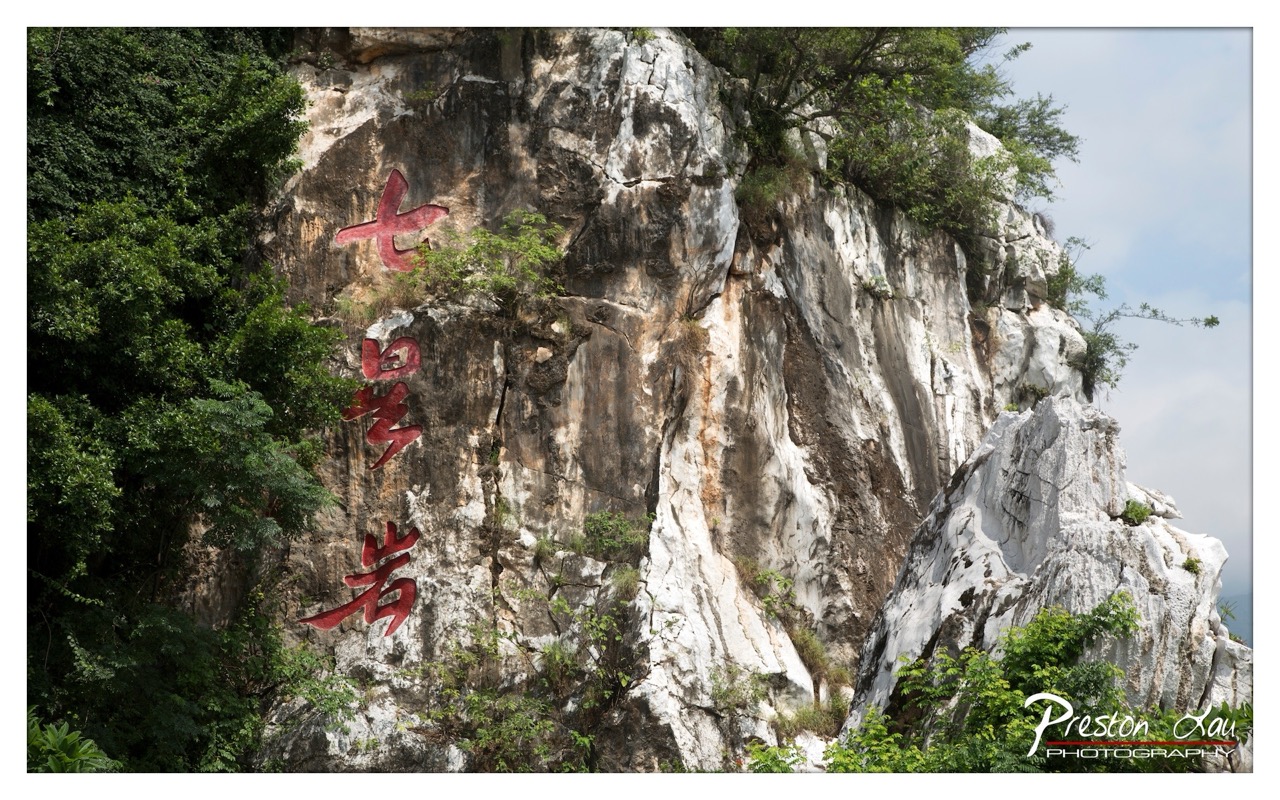

1. Overall Rating (0–10) — 7.0
This photograph captures the dramatic interplay between natural grandeur and human inscription, with the bold red characters carved into the limestone cliff serving as a striking focal point. The contrast between the rugged rock face and the lush greenery enhances the sense of scale and timelessness. While the image successfully conveys the site’s cultural and geological significance, the slightly overexposed sky detracts from the overall harmony, softening the visual impact of the scene.
2. Composition (0–10) — 7.5
The vertical arrangement of the red characters draws the eye upward, creating a strong visual anchor. The asymmetrical framing, with dense foliage on the left and open rock on the right, balances the composition effectively, though a tighter crop might have improved focus on the inscriptions.
3. Lighting (0–10) — 6.5
The lighting is bright and even, highlighting the texture of the cliff face and the vividness of the red characters. However, the sky appears washed out, suggesting overexposure that diminishes the depth of the background and detracts from the atmospheric quality.
4. Color & Tone (0–10) — 7.0
The rich red of the calligraphy stands out boldly against the neutral grays and whites of the rock, while the surrounding green foliage adds natural vibrancy. The overall palette is harmonious, though the muted sky slightly reduces the contrast and emotional resonance.
5. Creativity (0–10) — 7.5
The photograph blends natural landscape with cultural artistry in a compelling way, emphasizing the human imprint on the environment. The choice to focus on the inscriptions within the vastness of the cliff creates a narrative of endurance and reverence, lending the image a strong conceptual edge.
6. Technical Quality (0–10) — 8.0
The image is sharp and well-focused, with clear detail in both the rock texture and the calligraphy. The watermark is discreet, and the overall clarity suggests strong technical execution.
7. Emotional Impact (0–10) — 6.5
The scene evokes a sense of awe and respect for both nature and tradition, but the lack of human presence or narrative context keeps the emotional connection somewhat detached. The viewer is invited to admire the site rather than feel deeply engaged with it.
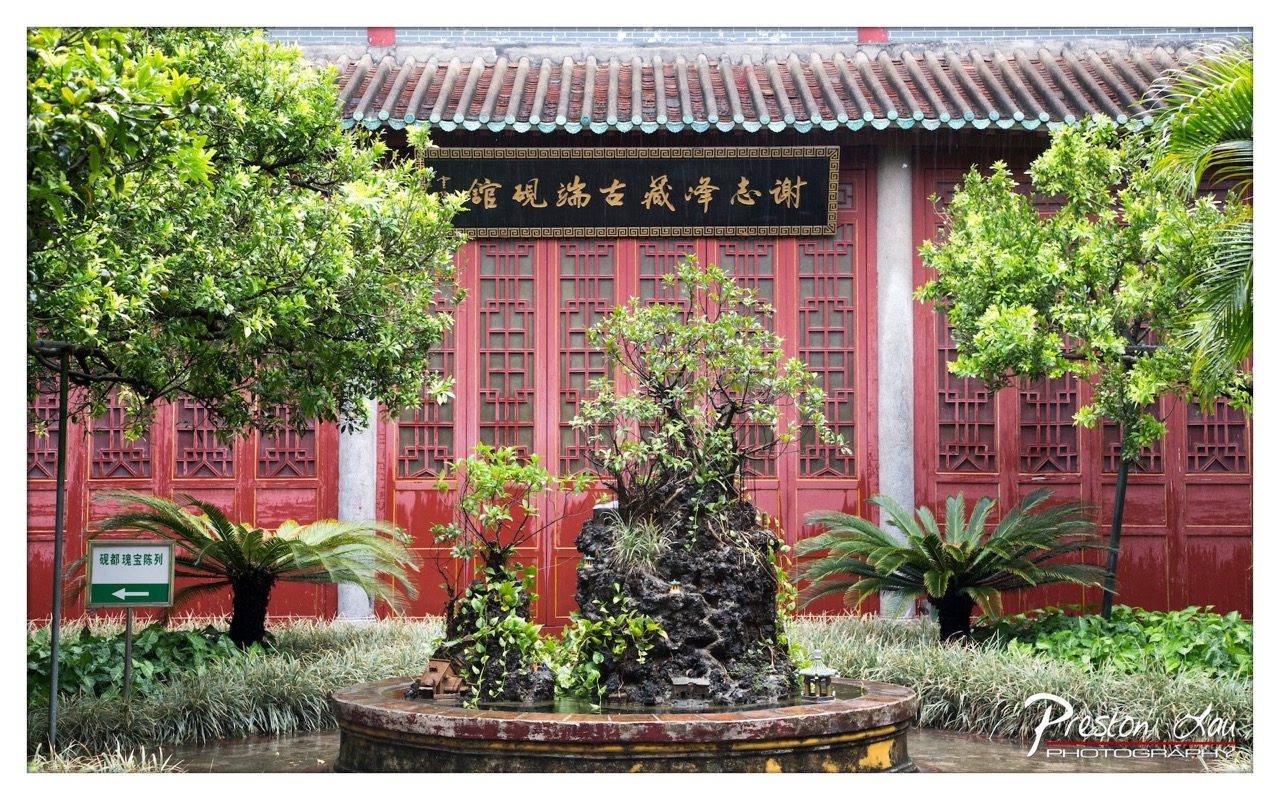

1. Overall Rating (0–10) — 7.0
This photograph captures the serene harmony of a traditional Chinese garden, where architectural elegance meets natural beauty in a moment of quiet contemplation. The vivid red of the building contrasts strikingly with the lush greenery, while the gentle rain adds a layer of atmospheric depth and stillness. Though the scene is rich in cultural detail, the composition’s slight visual clutter—particularly the sign in the foreground—distracts from the overall aesthetic balance.
2. Composition (0–10) — 6.5
The central placement of the rock garden and the symmetrical red doors create a strong focal point, but the framing is slightly off-kilter, with the sign on the left introducing an unintended visual intrusion. A tighter crop could enhance focus and balance.
3. Lighting (0–10) — 7.0
Soft, diffused light from the overcast sky and rain creates a calm, even illumination that enhances texture and detail without harsh shadows. The damp surfaces reflect light subtly, adding a sense of quiet moisture and depth.
4. Color & Tone (0–10) — 7.5
The rich, saturated red of the wooden doors contrasts beautifully with the vibrant greens of the foliage and the dark, weathered tones of the stone, creating a visually cohesive palette. The slightly cool tone enhances the tranquil, rainy atmosphere.
5. Creativity (0–10) — 7.0
The image successfully blends cultural context with natural elements, capturing a moment that feels both timeless and lived. The inclusion of rain adds a poetic layer, elevating the scene beyond mere documentation.
6. Technical Quality (0–10) — 8.0
The image is sharp and well-focused, with excellent clarity in both the foreground and background. The exposure is balanced, preserving detail in the shadows and highlights.
7. Emotional Impact (0–10) — 7.0
The photograph evokes a sense of peace and reverence, inviting the viewer into a quiet, reflective space. The rain and stillness create a meditative mood, suggesting a moment of pause in a world of enduring tradition.
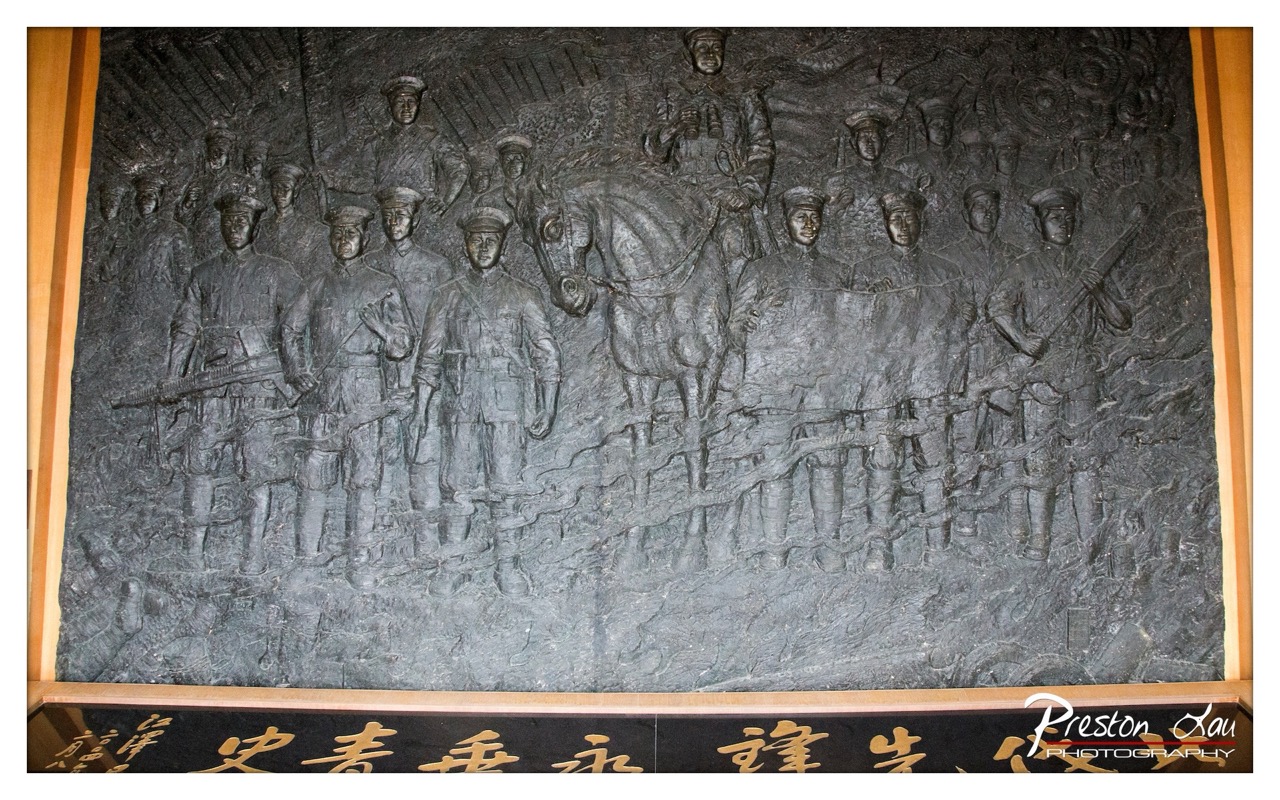

1. Overall Rating (0–10) — 7.0
This photograph captures the solemn gravity of a historical relief sculpture, conveying a sense of collective memory and national narrative through its intricate detail and somber tone. The composition centers the viewer’s attention on the textured bronze surface, where the interplay of light and shadow enhances the depth and drama of the figures. While the image effectively documents the artwork, a more dynamic lighting approach or tighter framing could elevate its visual impact and emotional resonance.
2. Composition (0–10) — 6.5
The central placement of the relief emphasizes its importance, but the wide framing includes distracting elements like the wooden border and text panel at the bottom, which slightly disrupt visual focus.
3. Lighting (0–10) — 6.0
The lighting is functional, highlighting the relief’s texture, but it lacks directional contrast, resulting in a somewhat flat appearance that diminishes the sculpture’s three-dimensional quality.
4. Color & Tone (0–10) — 6.5
The monochromatic palette of dark bronze and muted wood tones reinforces the historical gravity of the scene, though the lack of color variation limits visual dynamism.
5. Creativity (0–10) — 6.0
The photograph is a straightforward documentation of the relief, prioritizing clarity over artistic interpretation, which limits its expressive originality.
6. Technical Quality (0–10) — 7.5
The image is sharp and well-focused, with clear detail in the relief’s surface and legible text, though the exposure is slightly uneven across the frame.
7. Emotional Impact (0–10) — 6.5
The photograph conveys a respectful reverence for the subject, but the emotional weight is muted by the neutral presentation, leaving the viewer more as an observer than an engaged participant.
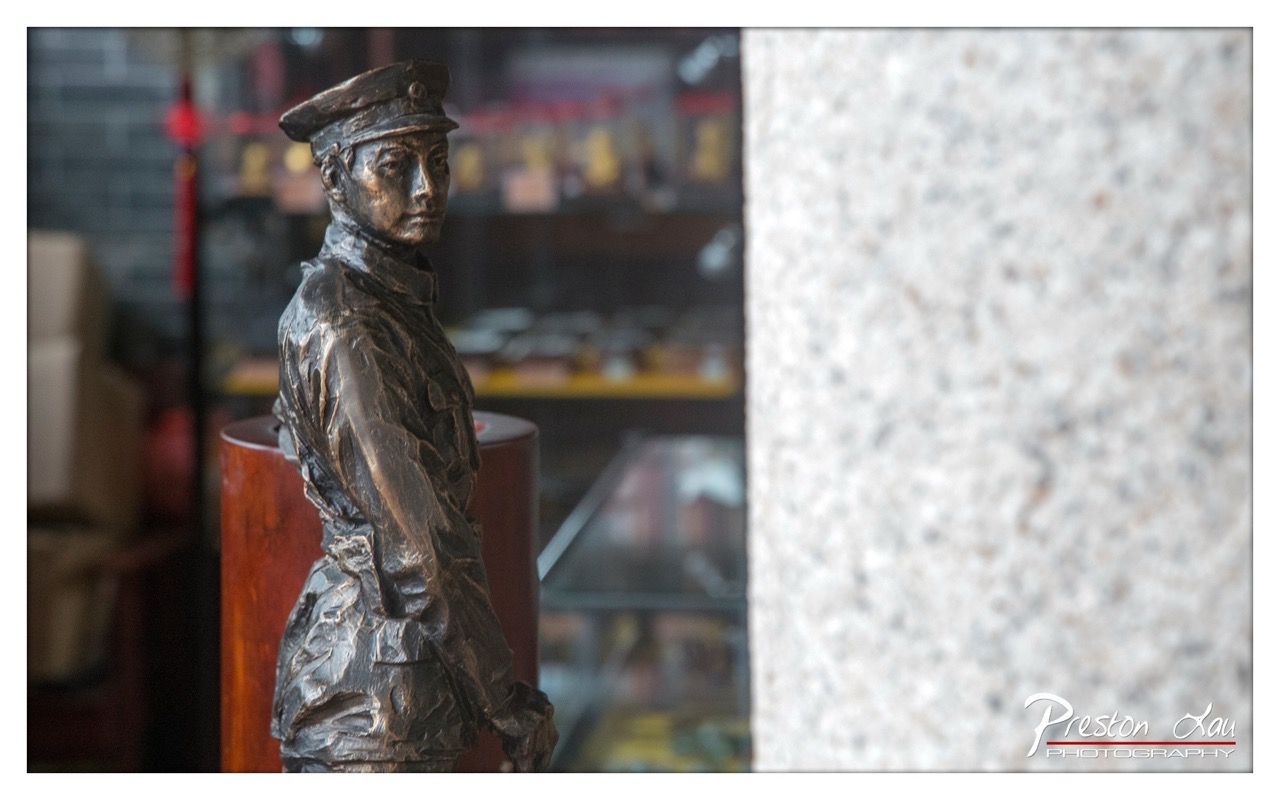

1. Overall Rating (0–10) — 7.0
This photograph captures a quiet, contemplative moment centered on a bronze soldier statue, its weathered texture and solemn expression evoking a sense of historical weight. The juxtaposition of the statue against the blurred, modern interior background creates a subtle tension between memory and the present. While the image is visually compelling and rich in mood, the shallow depth of field and slightly cluttered background keep it from achieving full compositional harmony.
2. Composition (0–10) — 6.5
The statue is placed off-center, creating a balanced but slightly awkward framing due to the large, empty space on the right. The vertical split between the textured wall and the background adds visual interest, though the composition could benefit from tighter framing to emphasize the subject.
3. Lighting (0–10) — 7.0
Soft, directional light highlights the contours and texture of the bronze, enhancing its three-dimensional form. The gentle shadows lend depth and mood, while the ambient lighting in the background remains subdued, keeping focus on the statue.
4. Color & Tone (0–10) — 7.5
The palette is dominated by warm, earthy tones—bronzes, browns, and muted grays—that harmonize well with the statue’s material. The contrast between the dark figure and the lighter wall adds visual weight, while the tonal balance feels natural and cohesive.
5. Creativity (0–10) — 7.0
The image successfully merges historical and contemporary elements through the juxtaposition of the statue and its modern surroundings. The choice to frame it this way suggests a narrative about memory and legacy, though the concept could be more boldly expressed.
6. Technical Quality (0–10) — 8.0
The focus is sharp on the statue, capturing fine surface details, while the background is appropriately blurred. The image is well-exposed, with no noticeable noise or artifacts, indicating strong technical execution.
7. Emotional Impact (0–10) — 7.5
The solemnity of the statue and the quiet atmosphere evoke a reflective mood, inviting contemplation of duty, sacrifice, and time. The emotional resonance is strong, though the lack of direct engagement with the viewer limits its immediacy.
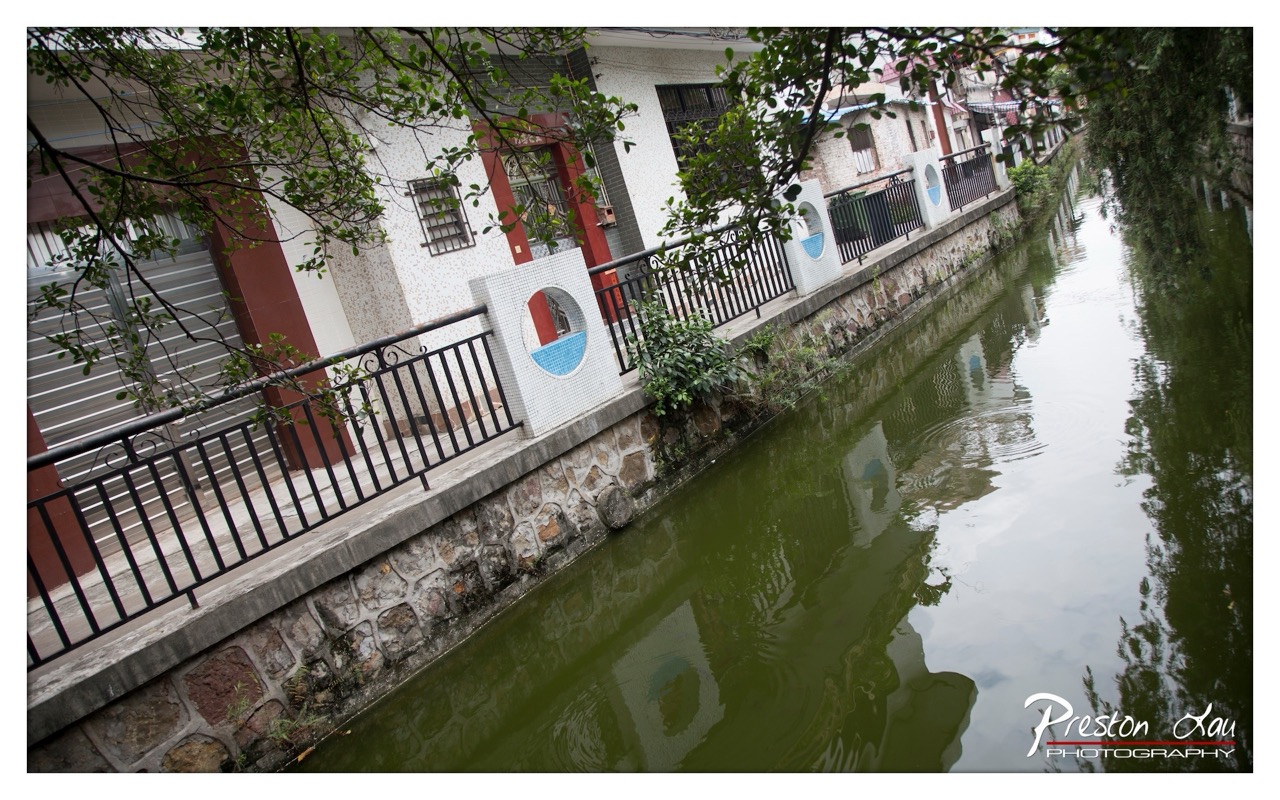

1. Overall Rating (0–10) — 6.8
This photograph captures a quiet, everyday riverside scene with a subtle sense of stillness and urban decay. The diagonal composition draws the eye along the canal, while the reflections in the murky water add depth and a contemplative mood. The image feels authentic and unpolished, capturing a moment of quiet resilience in a lived-in environment, though it lacks the visual clarity and emotional punch to elevate it beyond a simple snapshot.
2. Composition (0–10) — 7.0
The diagonal line of the canal and railing creates a strong leading line, guiding the viewer through the frame. The overhanging branches in the foreground add depth and frame the scene naturally, though they slightly clutter the top edge.
3. Lighting (0–10) — 6.0
The soft, diffused light suggests an overcast day, which flattens the shadows and reduces contrast. While this contributes to the calm, melancholic tone, it also limits the richness of detail and texture in the stone and water.
4. Color & Tone (0–10) — 6.5
The muted greens of the water and foliage dominate, creating a cohesive but subdued palette. The red accents on the building offer a subtle contrast, but the overall tonal range is limited, giving the image a slightly dull quality.
5. Creativity (0–10) — 6.5
The image captures a quiet, atmospheric moment in an urban landscape, with a focus on reflection and stillness. While the concept is grounded and observant, the execution lacks bold artistic choices, resulting in a composition that feels more documentary than expressive.
6. Technical Quality (0–10) — 7.5
The image is sharp and clear, with good focus on the midground elements. The watermark is subtle and does not detract from the scene. There is minimal noise, and the exposure is well-balanced, though the lack of dynamic range holds it back.
7. Emotional Impact (0–10) — 6.0
The scene evokes a sense of quiet contemplation and urban solitude, but the muted colors and flat lighting prevent a deeper emotional connection. The viewer is invited to observe, but not to feel.
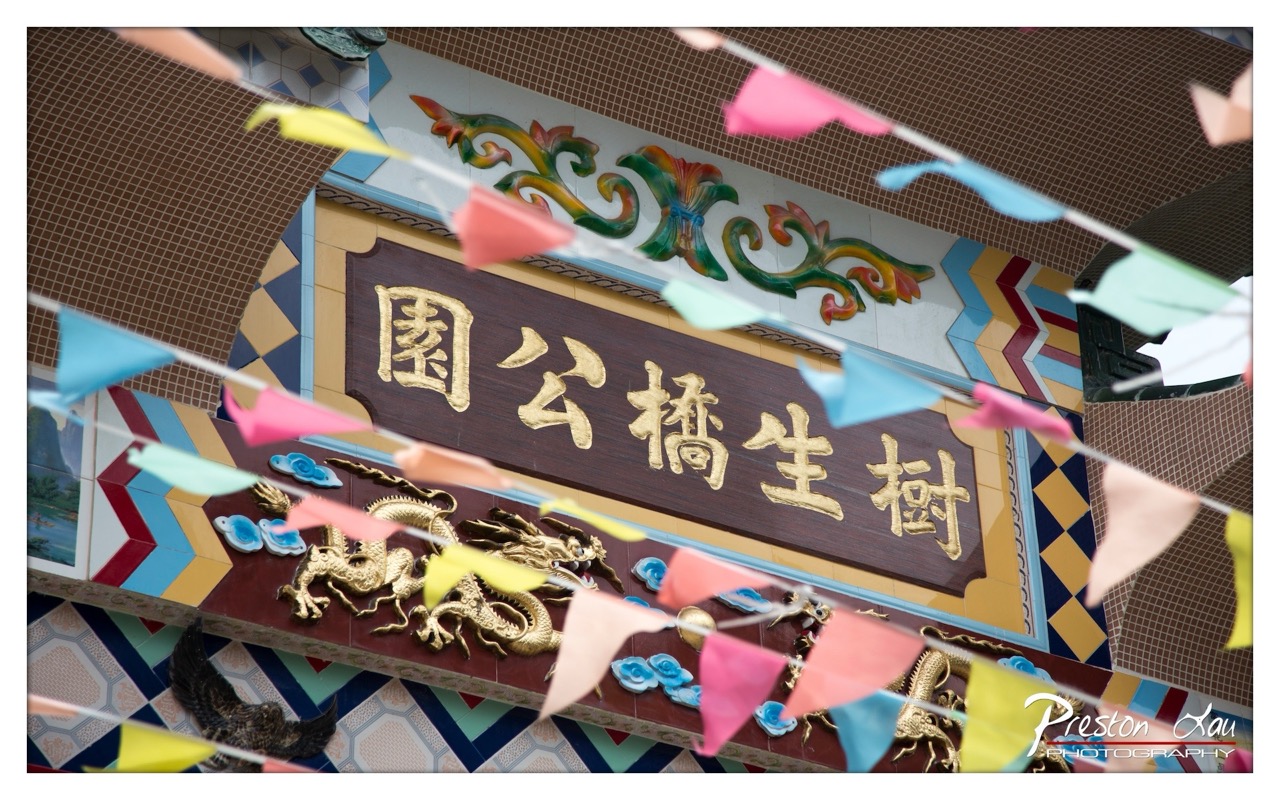

1. Overall Rating (0–10) — 7.5
This photograph captures the vibrant cultural richness of a traditional Chinese temple, where ornate craftsmanship and festive decoration converge. The colorful pennants create a sense of movement and celebration, while the golden calligraphy and dragon motifs evoke a deep sense of heritage and reverence. The composition, though slightly cluttered, succeeds in conveying the layered visual narrative of a sacred space alive with ritual and festivity.
2. Composition (0–10) — 7.0
The diagonal lines of the pennants guide the eye across the frame, creating dynamic energy, while the central sign provides a strong focal point. The framing feels slightly busy, but the layered elements enhance the sense of depth and cultural density.
3. Lighting (0–10) — 8.0
Natural daylight evenly illuminates the scene, highlighting the metallic sheen of the golden dragons and the vivid hues of the decorations. The soft shadows add dimension without obscuring details.
4. Color & Tone (0–10) — 8.5
A rich and harmonious palette of gold, red, blue, and pastel flags creates visual excitement. The warm tones enhance the celebratory mood, while the contrast between the ornate background and the delicate banners adds depth and balance.
5. Creativity (0–10) — 8.0
The photographer skillfully blends cultural symbolism with festive energy, transforming a static architectural detail into a living story. The use of foreground elements to frame the sign adds a dynamic, narrative quality.
6. Technical Quality (0–10) — 8.0
Sharp focus on the central sign and key decorative elements ensures clarity, while the shallow depth of field effectively blurs the background and foreground for a polished, intentional look.
7. Emotional Impact (0–10) — 7.5
The image evokes a sense of joy, tradition, and communal pride, inviting the viewer to feel the warmth of a cultural celebration. The richness of detail and color stirs curiosity and appreciation for the heritage on display.
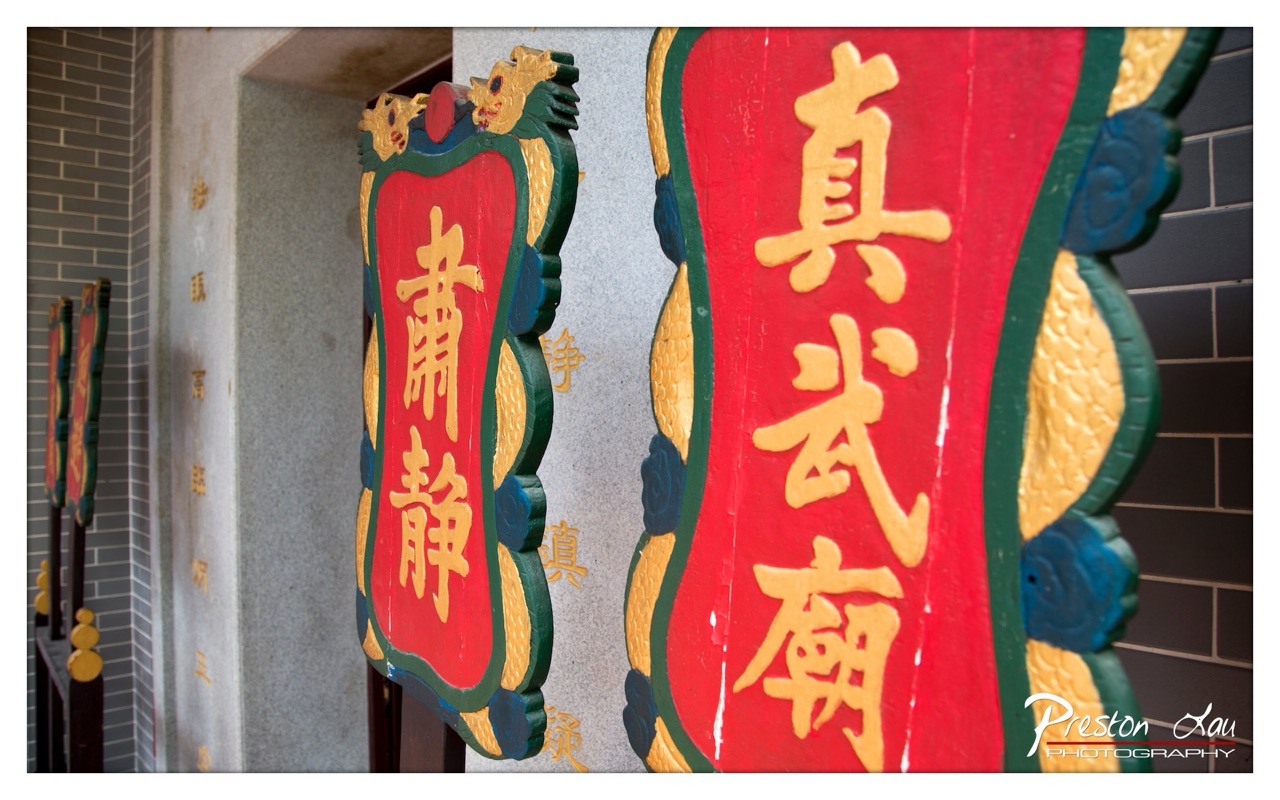

1. Overall Rating (0–10) — 7.5
This photograph captures the vibrant cultural essence of a traditional Chinese temple, with bold signage and intricate details conveying a sense of spiritual gravitas. The rich reds and golds of the carved plaques stand out against the muted tones of the surrounding architecture, creating a visually striking contrast. While the composition feels slightly cluttered, the image succeeds in communicating the solemnity and authenticity of the space, offering a glimpse into a living cultural tradition.
2. Composition (0–10) — 6.5
The placement of the two plaques creates a diagonal visual flow, but the overlapping elements and partial view of the third sign in the background introduce a sense of visual noise. A tighter crop would enhance focus and clarity.
3. Lighting (0–10) — 7.0
Natural light illuminates the scene evenly, highlighting the texture and depth of the carved wood and paint. The soft shadows enhance the three-dimensional quality of the signs without obscuring the details.
4. Color & Tone (0–10) — 8.0
The bold red and gold hues evoke traditional Chinese symbolism, while the contrasting green and blue accents add visual richness. The color palette is harmonious and culturally resonant, with a balanced tonal range.
5. Creativity (0–10) — 7.5
The photographer captures a moment of cultural authenticity with a clear intent to emphasize the architectural and symbolic details. The framing suggests a narrative of reverence and continuity, elevating the image beyond mere documentation.
6. Technical Quality (0–10) — 8.0
The image is sharp and well-focused, with clear detail in the carved characters and textures. The exposure is balanced, and the resolution allows for fine examination of the craftsmanship.
7. Emotional Impact (0–10) — 7.0
The scene evokes a sense of quiet reverence and cultural pride, inviting the viewer to reflect on tradition and spiritual practice. While not emotionally dramatic, it carries a subtle dignity that resonates with those familiar with the cultural context.
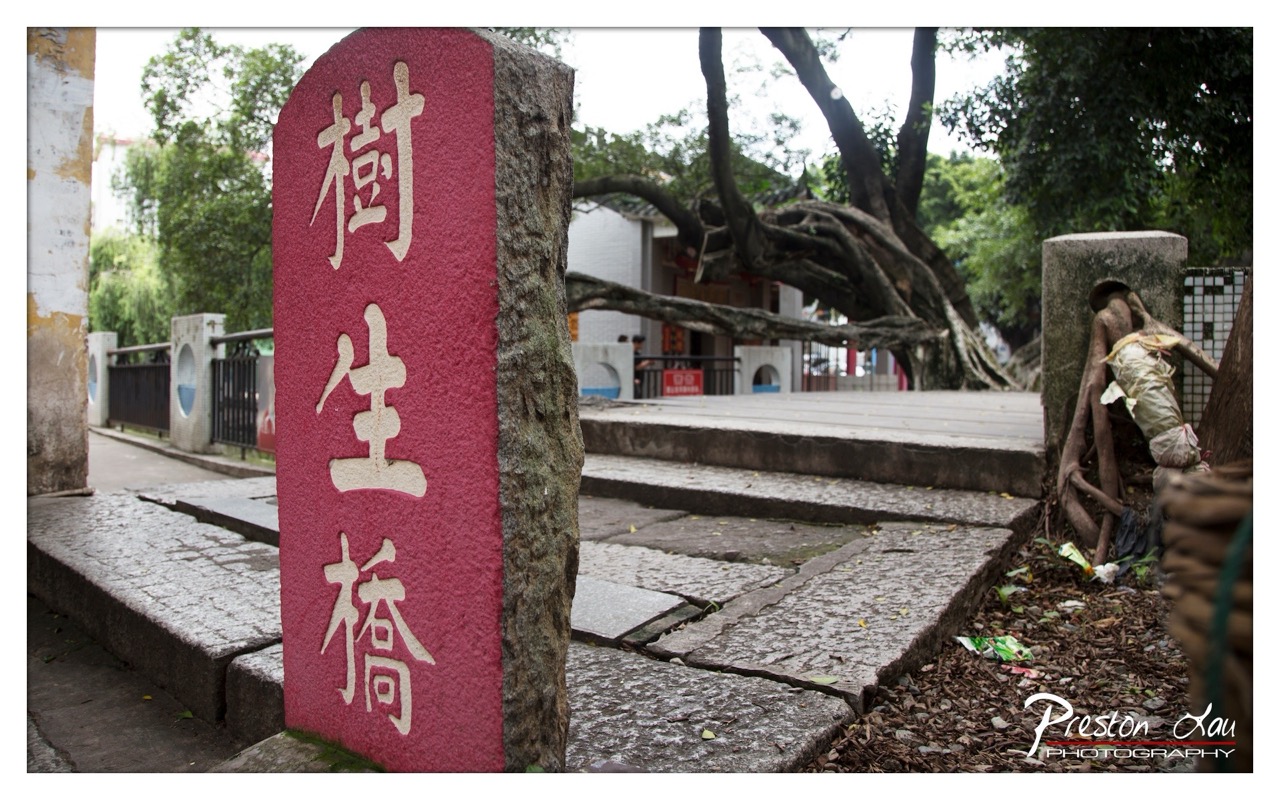

1. Overall Rating (0–10) — 7.0
This photograph captures a quiet, contemplative moment at a traditional Chinese site, where history and nature intertwine. The bold red stone marker, inscribed with the characters for "Shu Sheng Bridge," draws the eye and anchors the scene, while the gnarled tree roots in the background add a sense of time and resilience. Though the image is rich in cultural texture, the muted lighting and slightly cluttered background prevent it from achieving a more refined visual harmony.
2. Composition (0–10) — 6.5
The red stone marker is well-placed as a strong focal point, with the diagonal line of the steps guiding the viewer’s gaze into the background. However, the right side of the frame feels slightly unbalanced due to the scattered debris and the awkward inclusion of the wrapped object, which distracts from the scene’s serenity.
3. Lighting (0–10) — 6.0
Soft, diffused daylight creates even illumination without harsh shadows, allowing the textures of the stone and tree to be clearly visible. However, the lack of contrast and warm tones lends the scene a somewhat flat and subdued quality, diminishing the visual impact of the red marker.
4. Color & Tone (0–10) — 6.5
The vibrant red of the marker creates a powerful contrast against the muted grays and greens, drawing immediate attention. The overall palette is natural but restrained, with a slight cool cast that softens the image’s emotional warmth.
5. Creativity (0–10) — 7.0
The juxtaposition of the man-made marker with the ancient, twisting tree roots suggests a narrative of endurance and cultural continuity. The photographer captures a moment that feels both documentary and poetic, elevating a simple scene into a reflection on time and place.
6. Technical Quality (0–10) — 7.5
Sharp focus is maintained on the stone marker, with a shallow depth of field that blurs the background effectively. The image is clear and well-exposed, with no apparent technical flaws.
7. Emotional Impact (0–10) — 6.5
The image evokes a sense of quiet reverence and nostalgia, inviting the viewer to consider the stories embedded in the landscape. While the emotional resonance is present, it is tempered by the lack of dynamic lighting and a slightly cluttered composition.
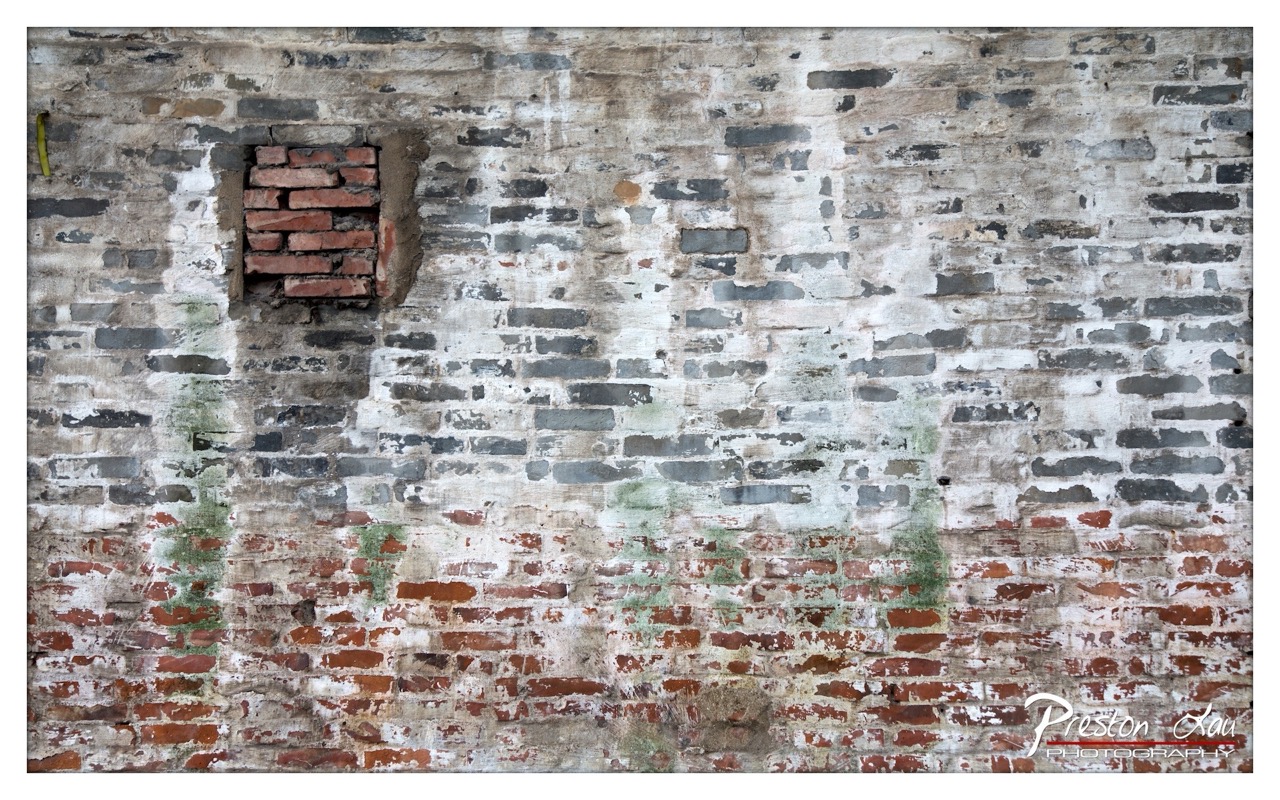

1. Overall Rating (0–10) — 7.0
This photograph captures the quiet poetry of decay, where time and weather have etched stories into a weathered brick wall. The contrast between the aged, crumbling surface and the small, intact red brick inset creates a subtle narrative of resilience and loss. While the composition is strong in texture and detail, the lack of a clear focal point slightly dilutes its emotional weight, leaving the viewer to wander rather than be drawn in.
2. Composition (0–10) — 6.0
The wall fills the frame, emphasizing texture over narrative, but the small brick inset is slightly off-center and partially obscured, weakening visual balance. A tighter crop might enhance focus on the focal point.
3. Lighting (0–10) — 6.5
Even, diffused lighting highlights the wall’s texture without harsh shadows, allowing subtle details and color variations to emerge. However, the flatness of the light slightly diminishes the sense of depth.
4. Color & Tone (0–10) — 7.0
The muted palette of gray, white, and red, accented by patches of green moss, evokes a sense of age and neglect. The tonal contrast is subtle but effective, giving the image a melancholic, grounded feel.
5. Creativity (0–10) — 7.5
The image transforms an ordinary wall into a textured canvas of history, using the contrast between old and new brick as a metaphor for endurance. The composition suggests a quiet story, inviting contemplation beyond mere documentation.
6. Technical Quality (0–10) — 8.0
Sharp focus across the frame captures fine details in the brickwork and mortar. The image is well-exposed with minimal noise, showcasing strong technical execution.
7. Emotional Impact (0–10) — 6.5
The image evokes a sense of nostalgia and quiet melancholy, drawing the viewer into a moment of stillness. While the emotional resonance is present, it remains restrained, leaving room for interpretation but not immediate connection.
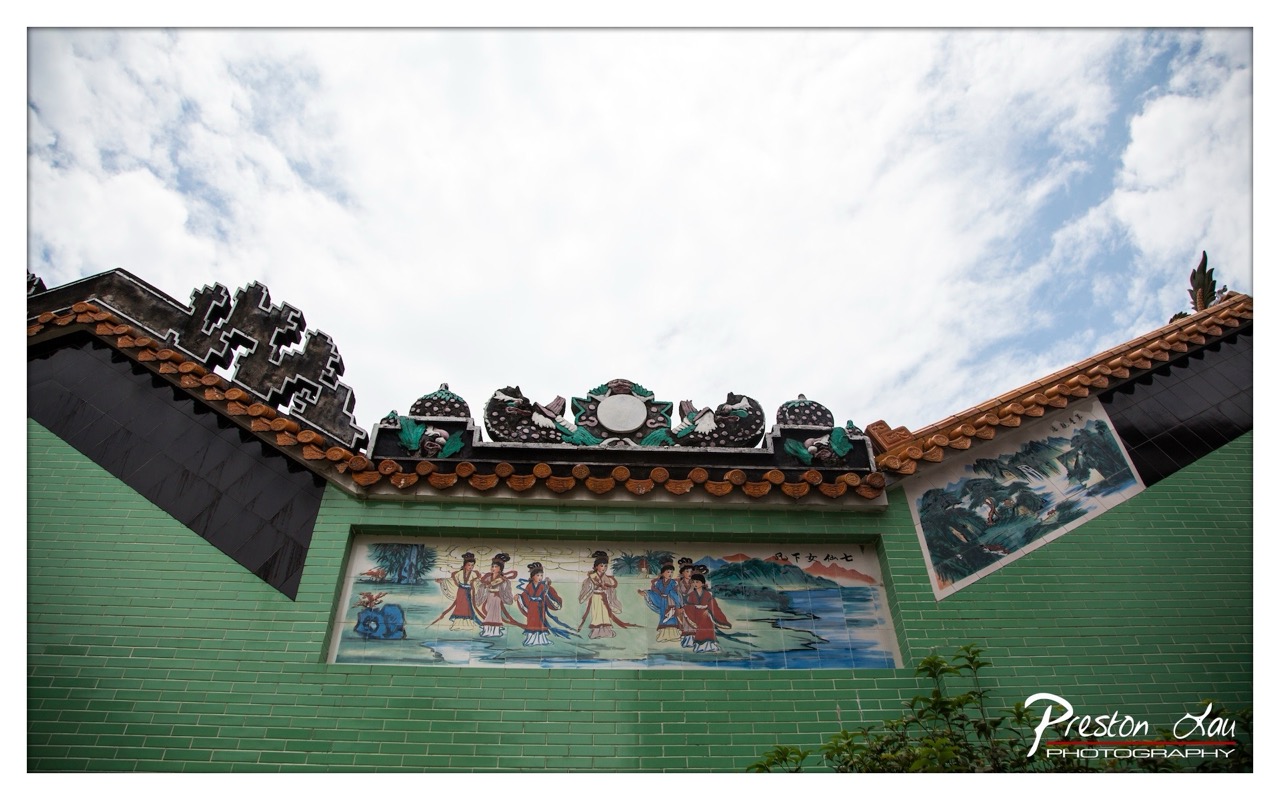

1. Overall Rating (0–10) — 7.0
This photograph captures the ornate beauty of traditional Chinese architectural detail with striking clarity and cultural resonance. The vivid green brick wall and colorful mural create a compelling contrast against the soft, cloud-dappled sky, drawing the eye to the intricate craftsmanship of the roofline and painted narrative. While the composition is strong and rich in detail, a more dynamic angle or tighter framing could enhance the sense of intimacy and grandeur.
2. Composition (0–10) — 7.0
The low-angle perspective emphasizes the height and intricacy of the roofline, while the mural and tiles are well-centered, creating a balanced and harmonious visual flow. The slight asymmetry of the framing adds a natural, observational feel without disrupting the overall symmetry.
3. Lighting (0–10) — 6.5
Natural daylight provides even illumination, enhancing the colors of the mural and tiles without harsh shadows. The overcast sky softens the light, creating a diffused glow that suits the subject’s traditional aesthetic.
4. Color & Tone (0–10) — 7.5
The rich green of the bricks contrasts beautifully with the warm terracotta tiles and the vibrant hues of the painted figures. The blue and white tones in the mural harmonize with the sky, creating a cohesive and pleasing palette.
5. Creativity (0–10) — 7.0
The image successfully blends cultural storytelling with architectural detail, using the mural as a narrative anchor. The choice to focus on the roofline and wall suggests a deliberate effort to highlight heritage and artistry, though the composition remains relatively conventional.
6. Technical Quality (0–10) — 8.0
The image is sharp and detailed, with precise focus on the mural and decorative elements. The exposure is well-balanced, and the resolution captures fine textures in the tiles and brickwork.
7. Emotional Impact (0–10) — 6.5
The photograph evokes a sense of reverence for tradition and craftsmanship, inviting viewers to contemplate the stories embedded in the architecture. While the emotional connection is subtle, it is grounded in the authenticity and artistry of the scene.